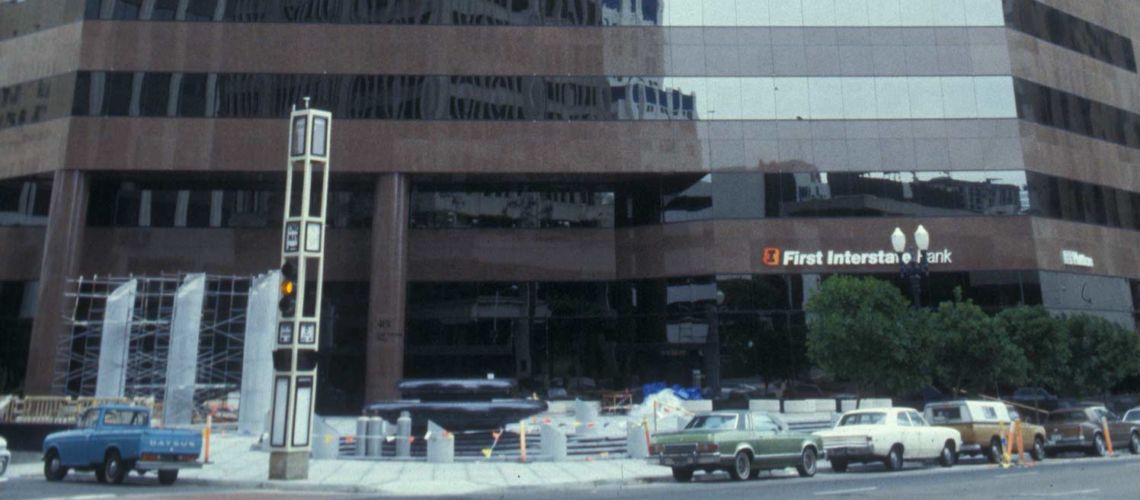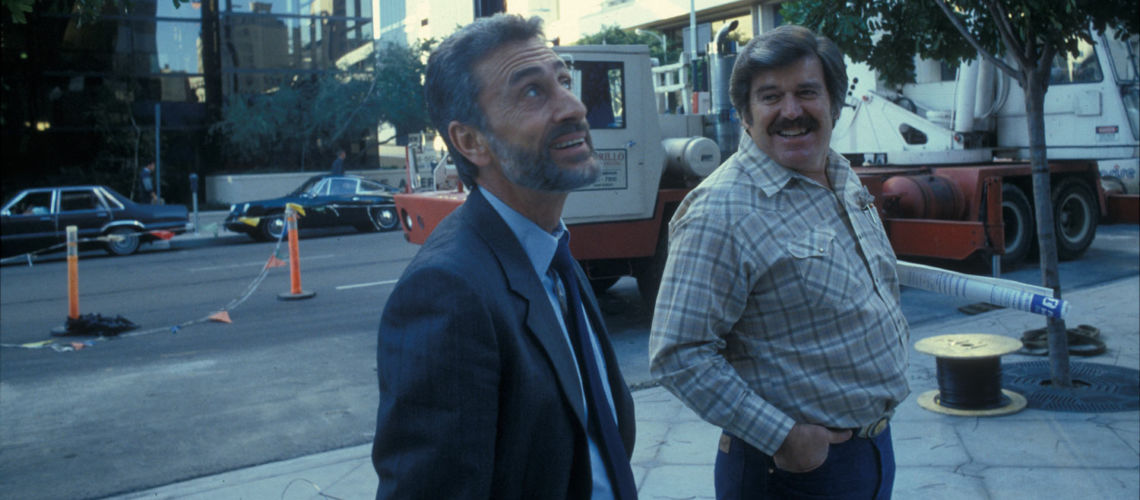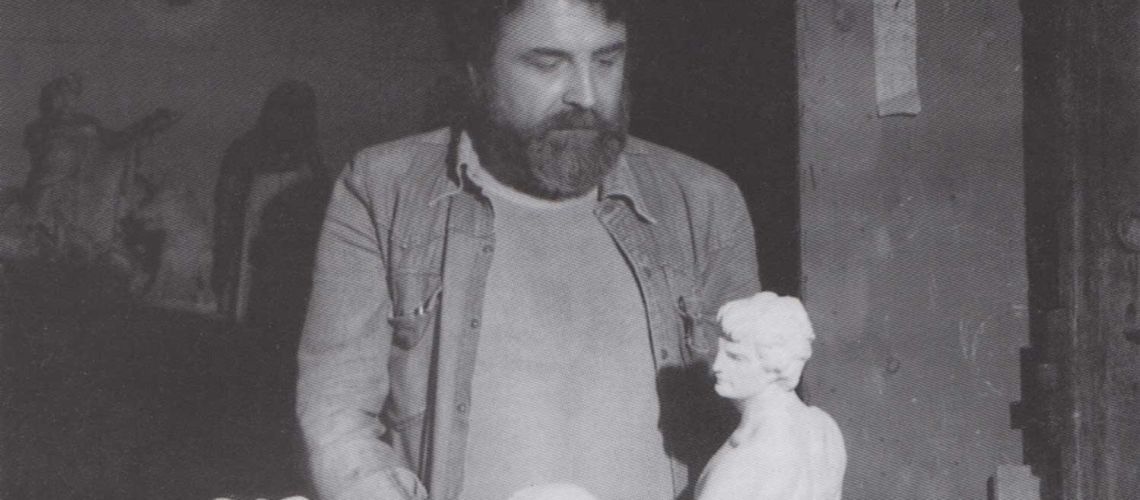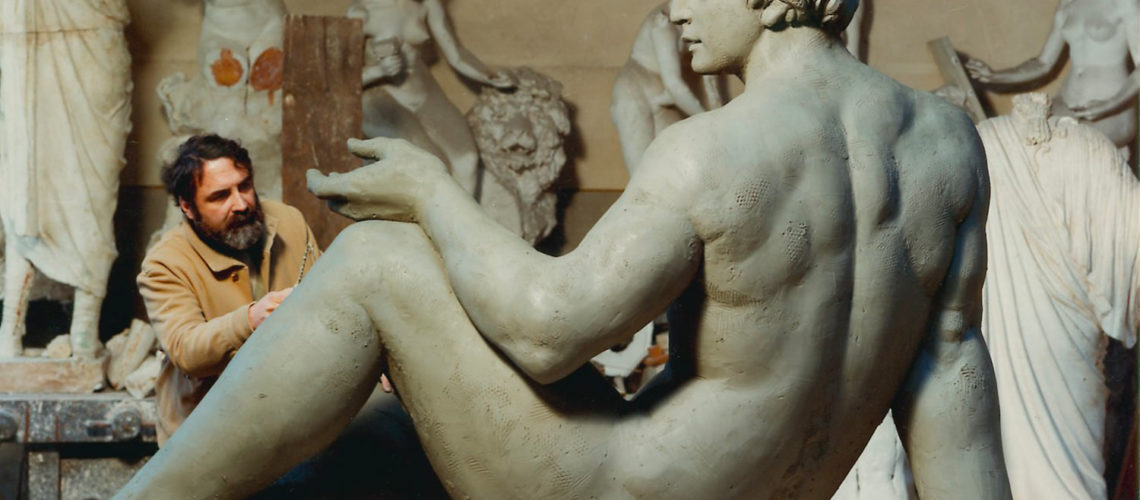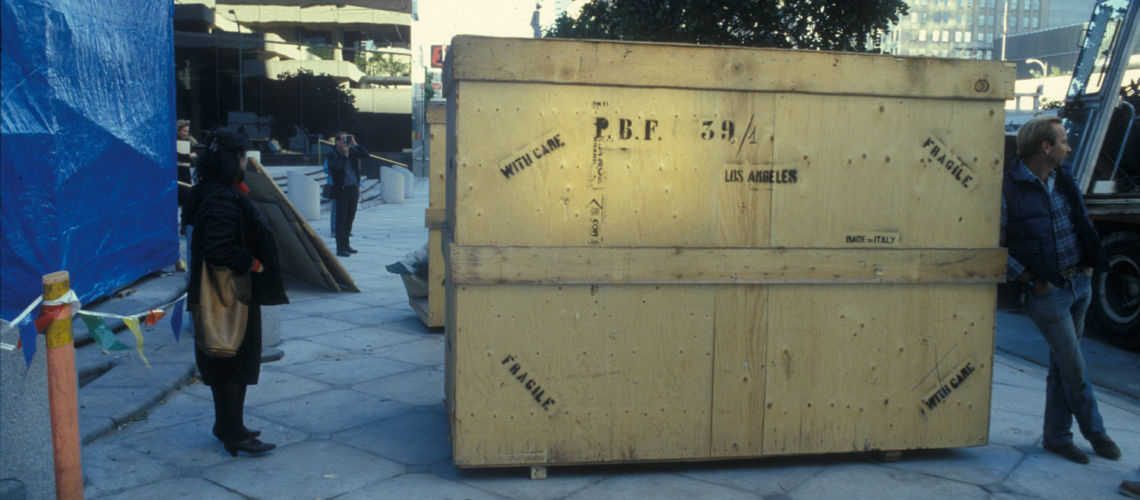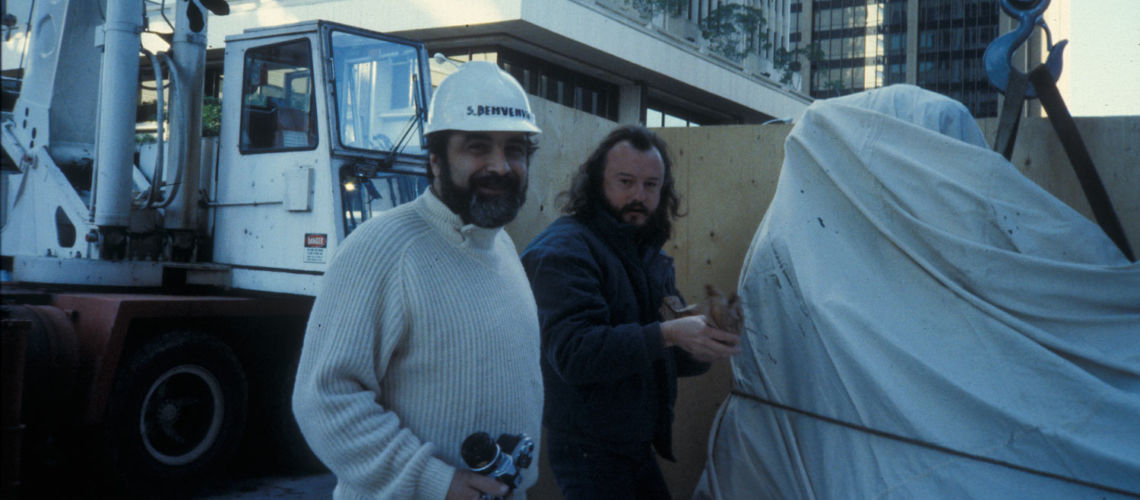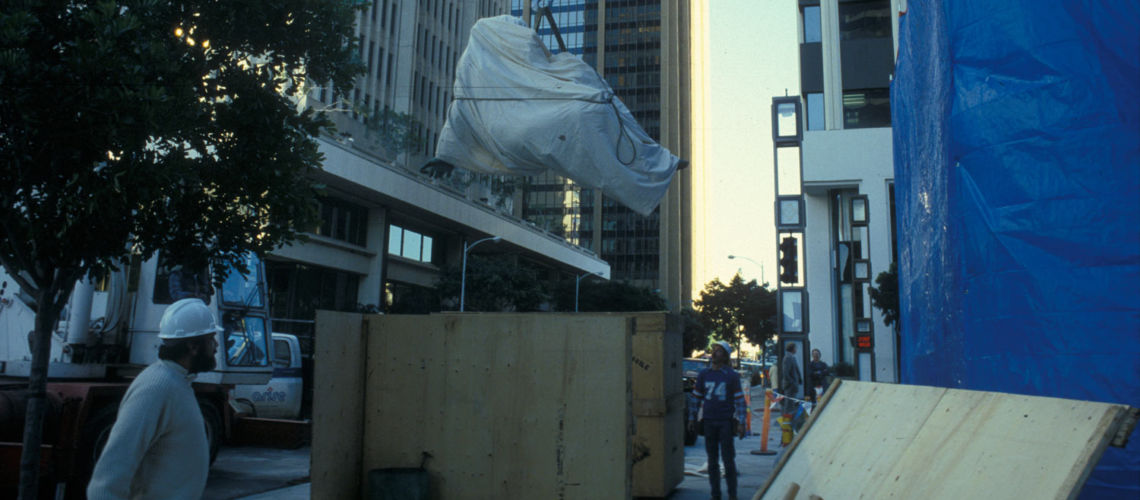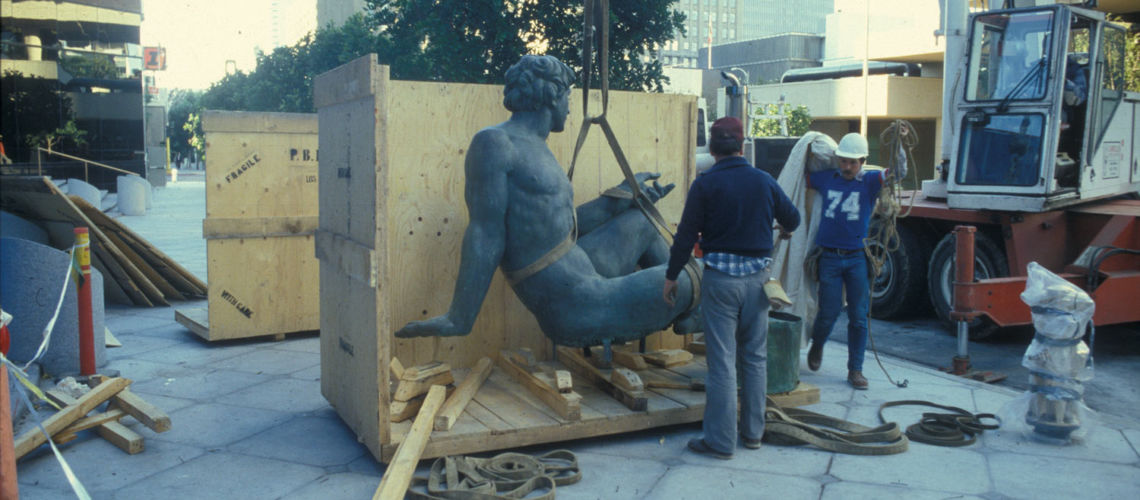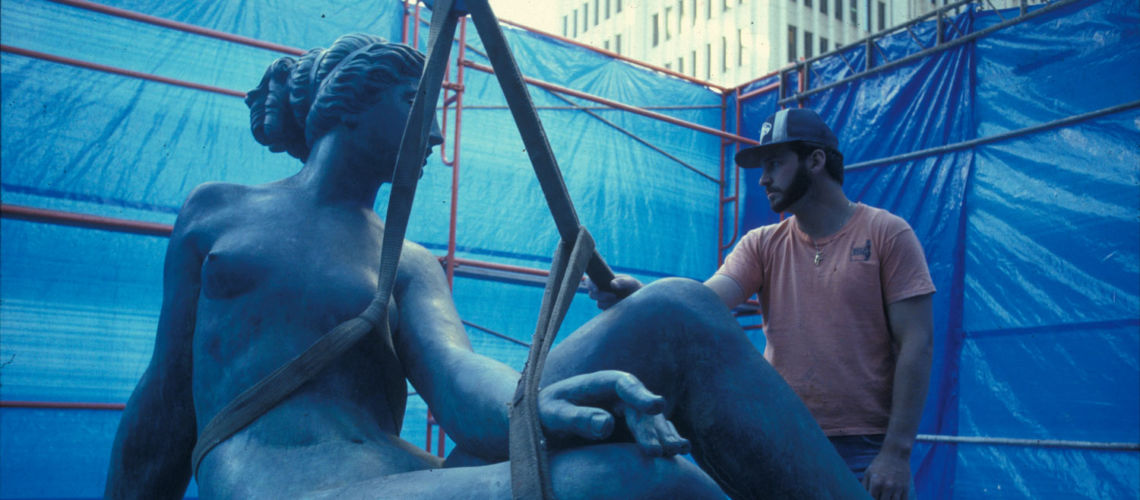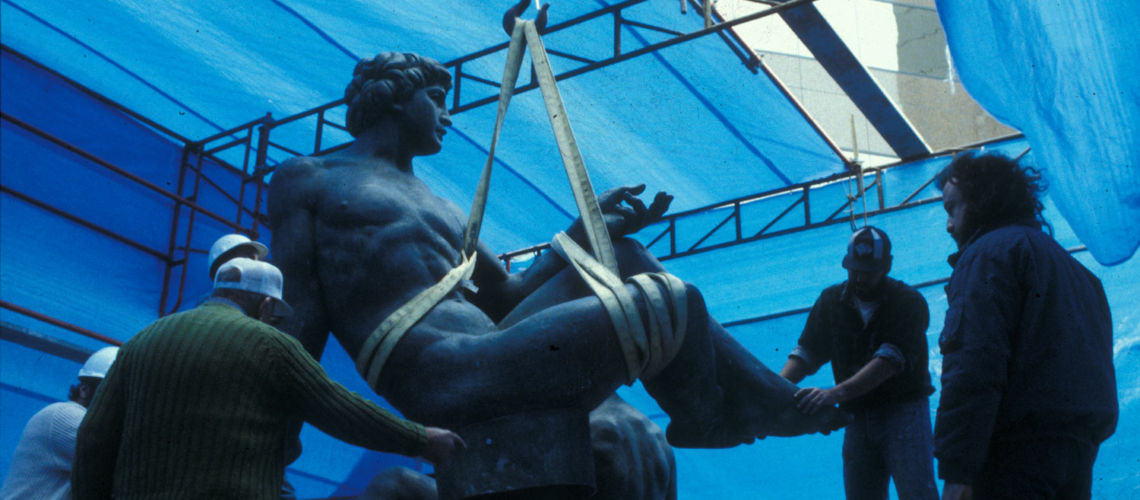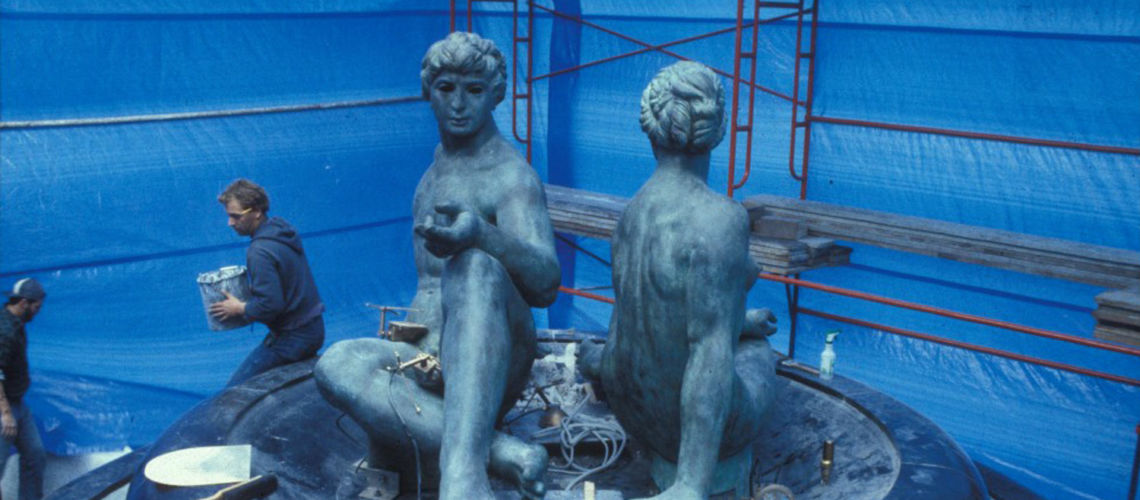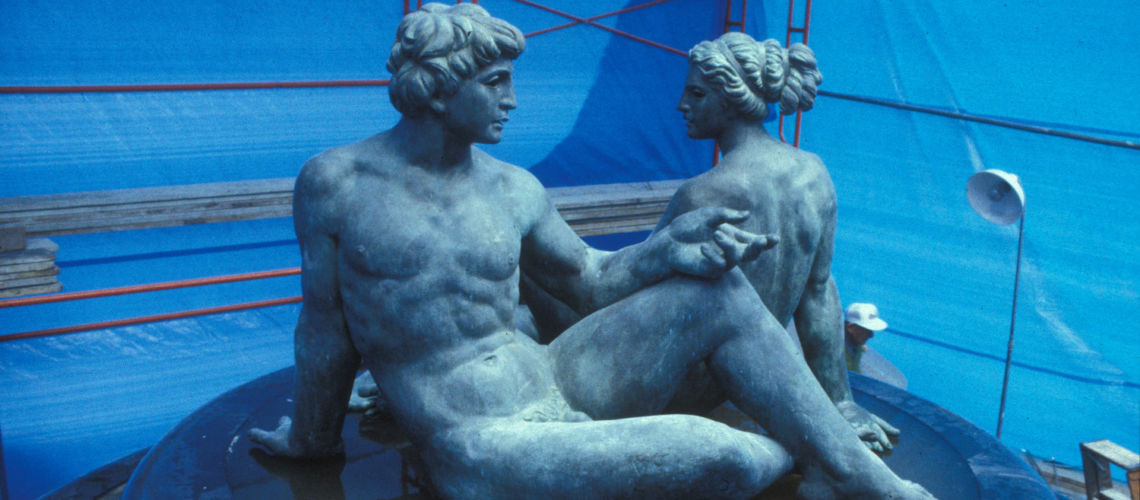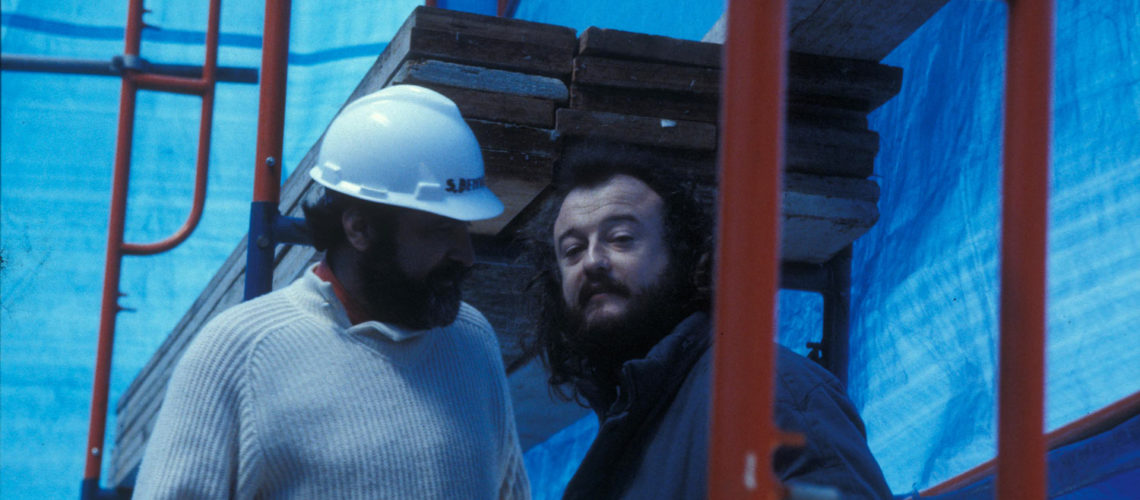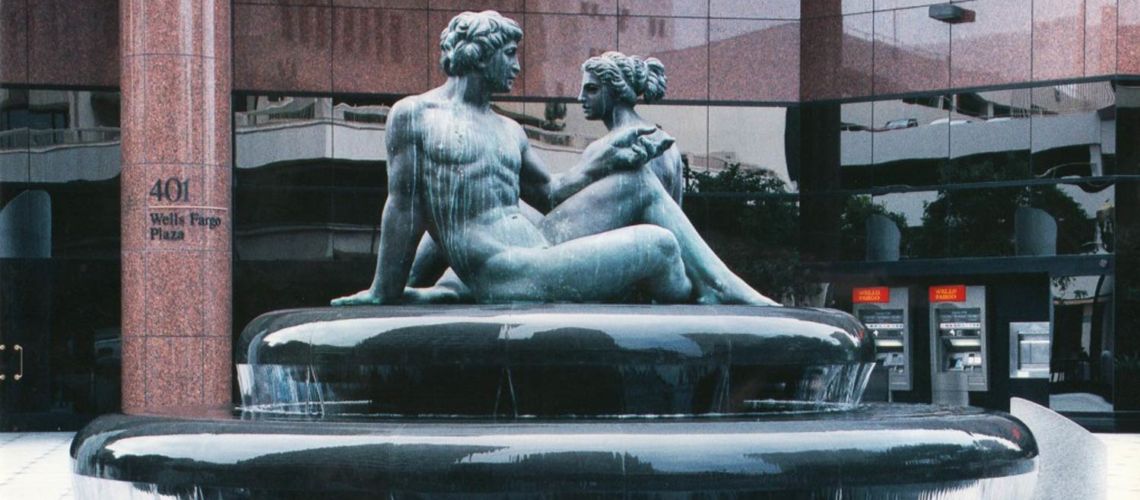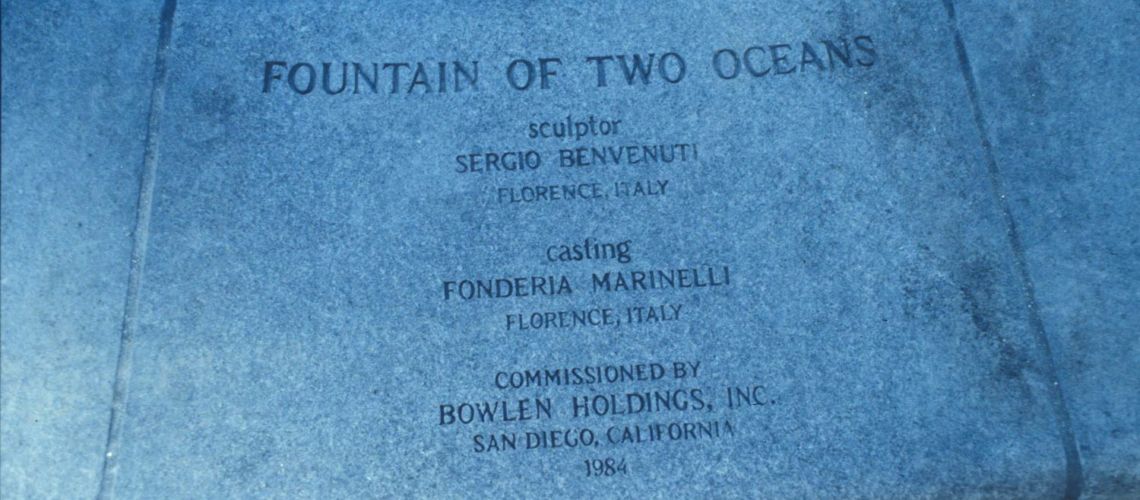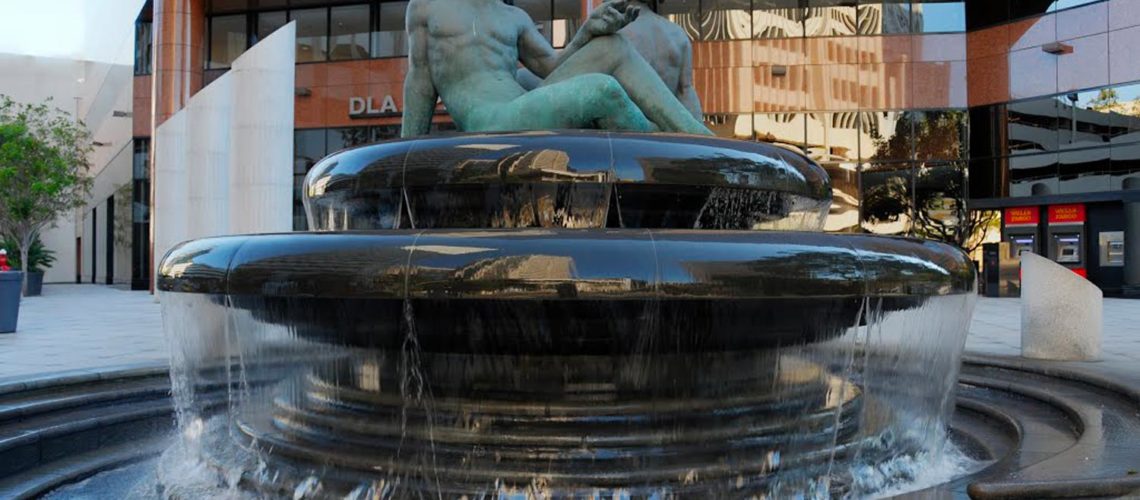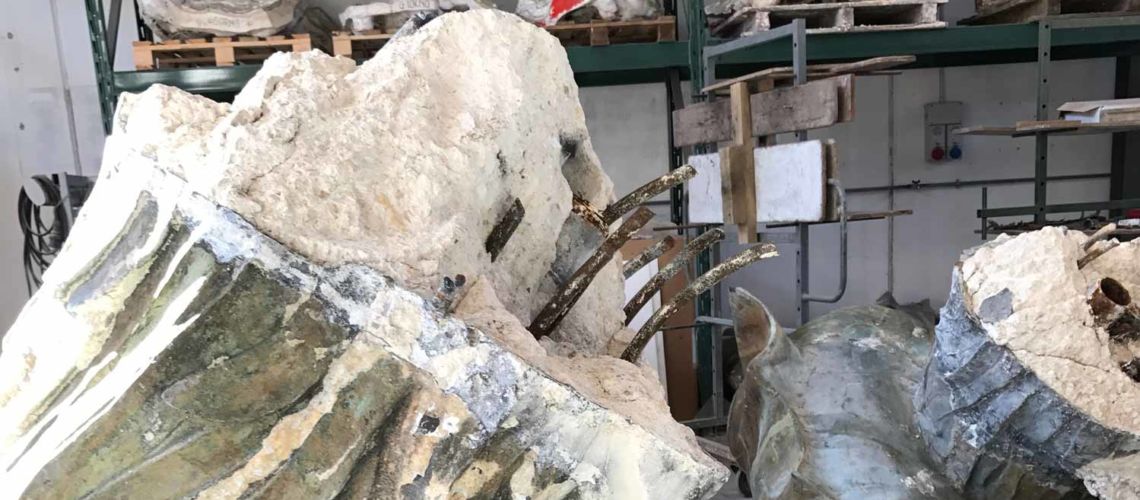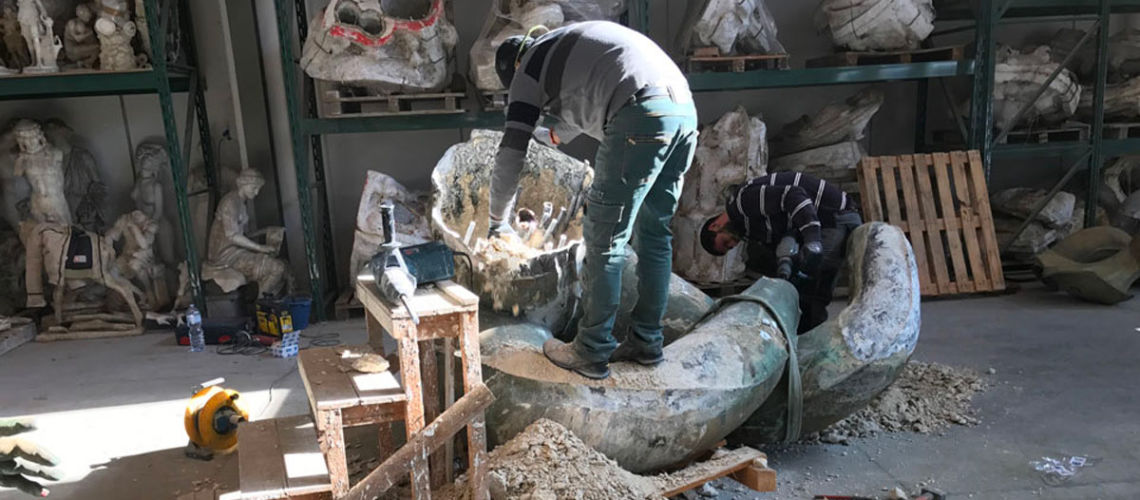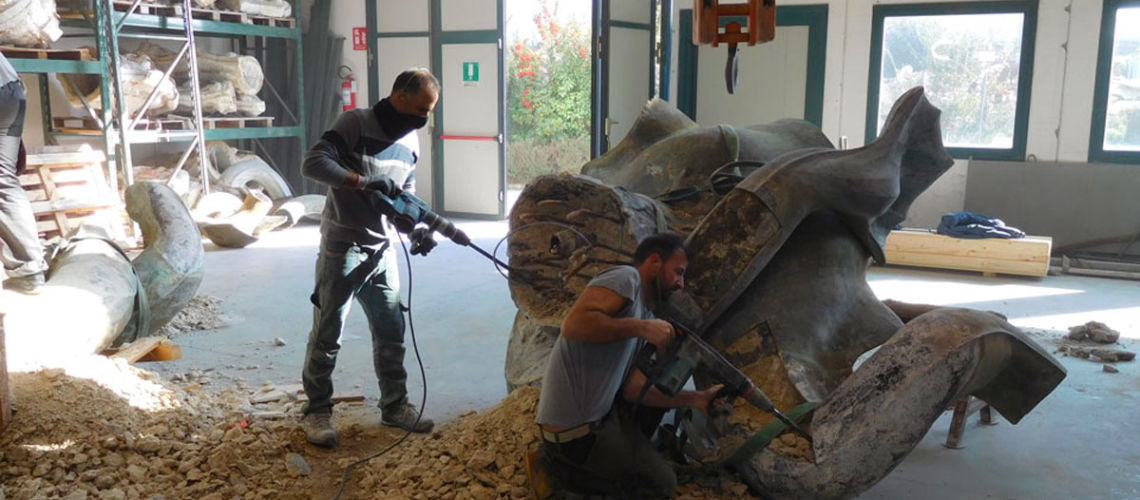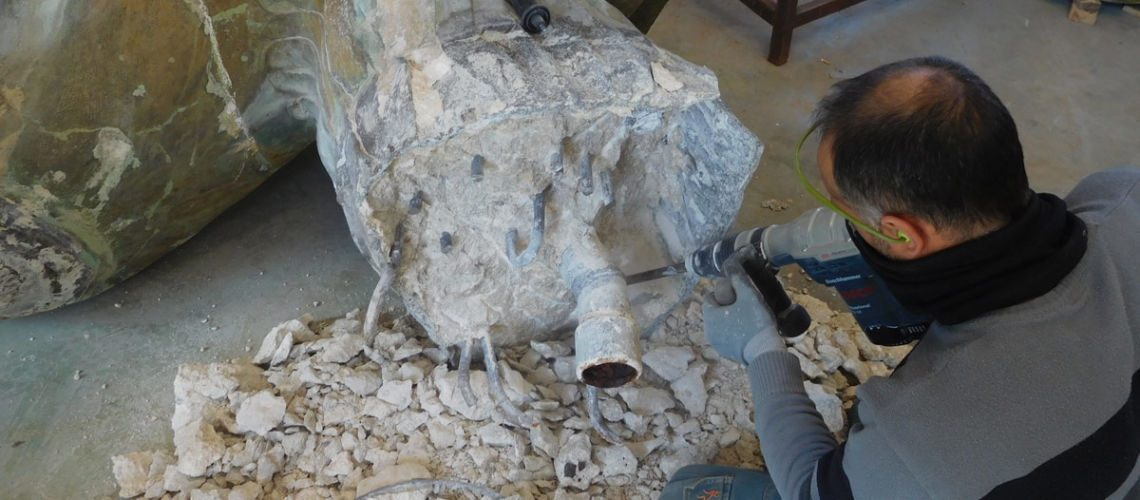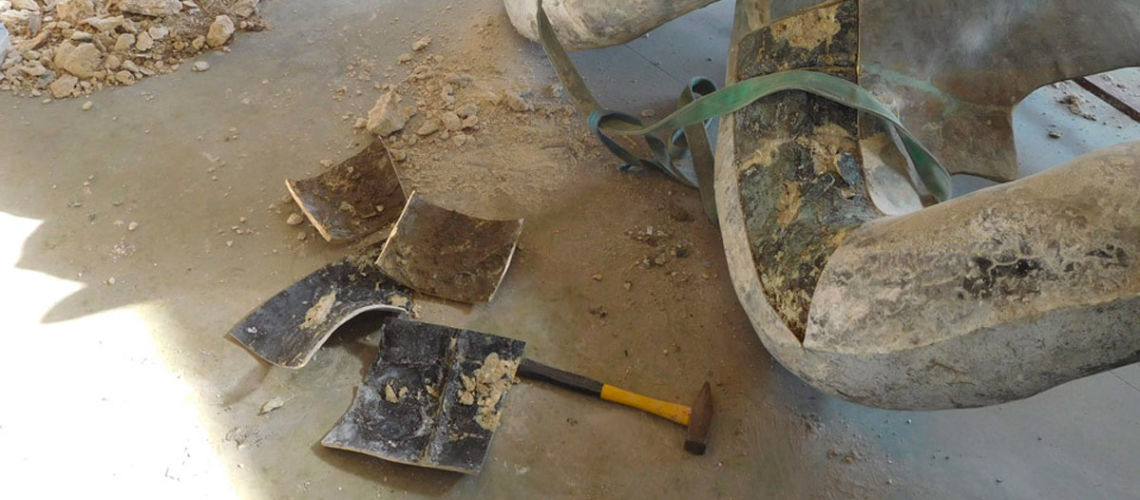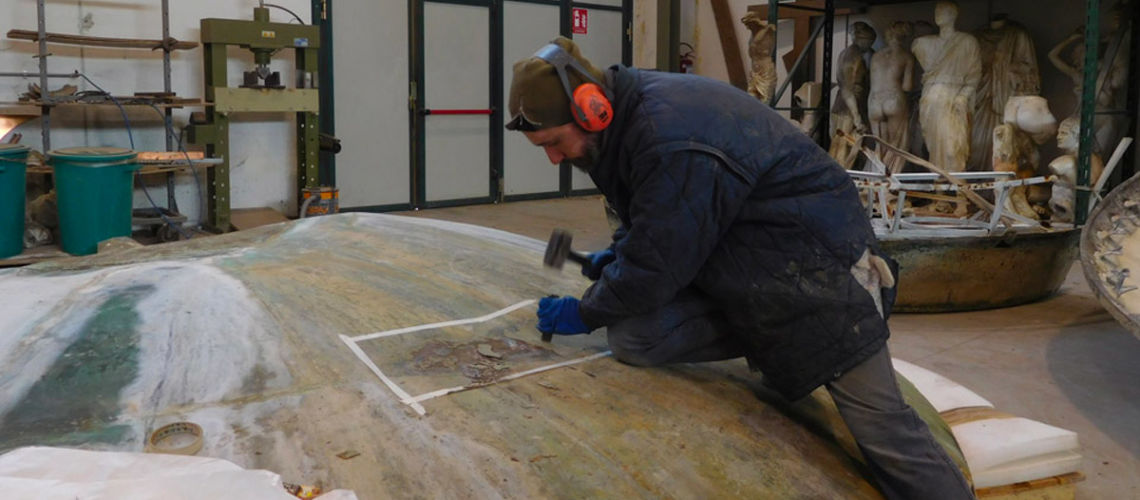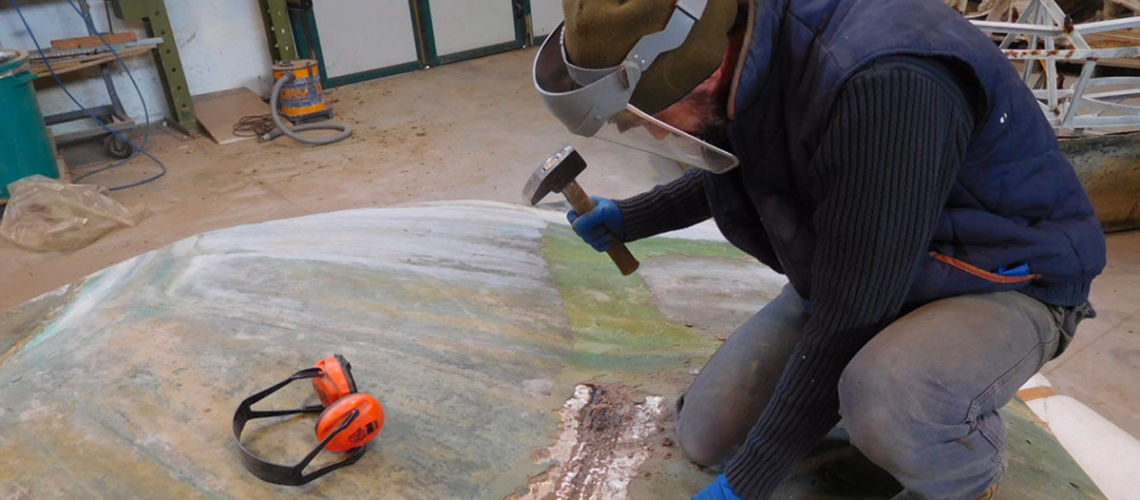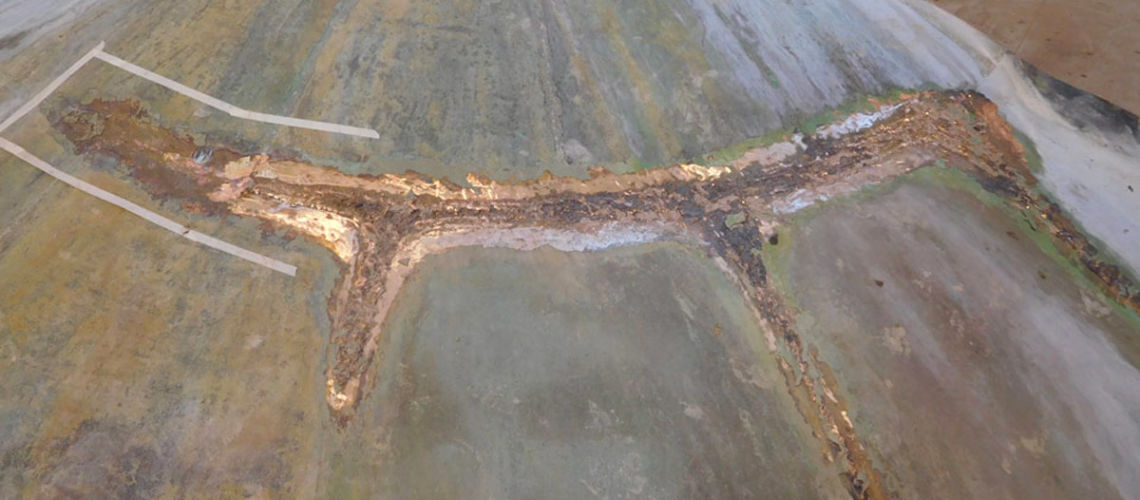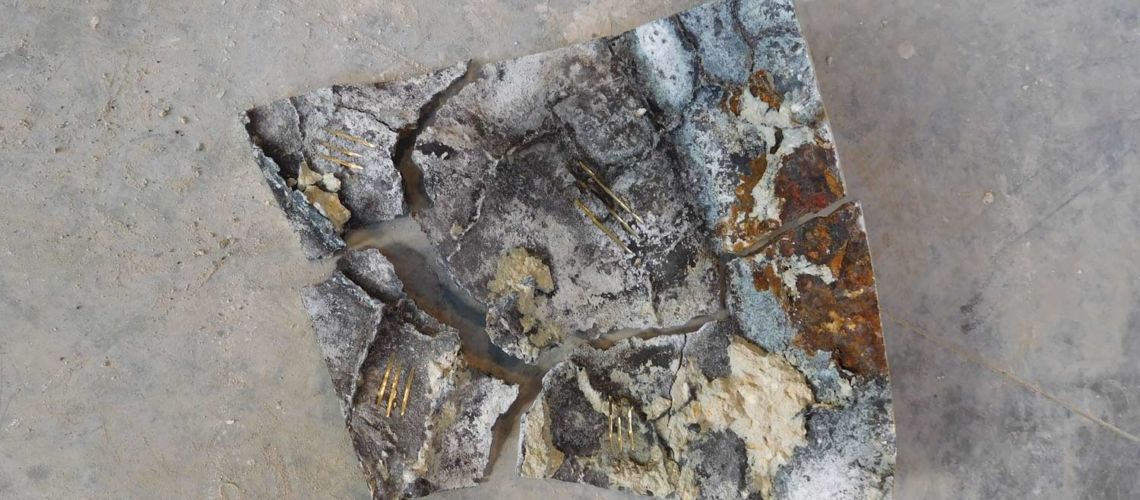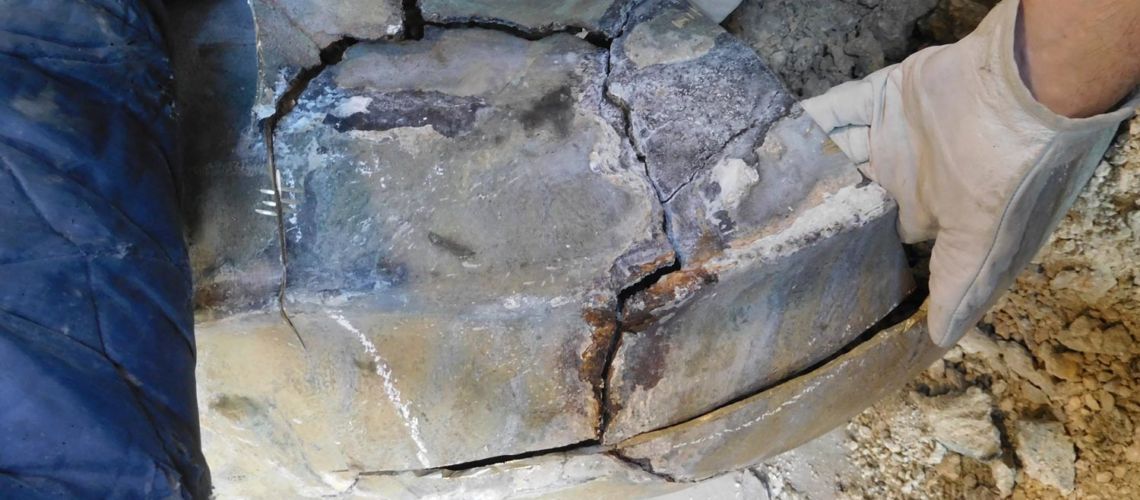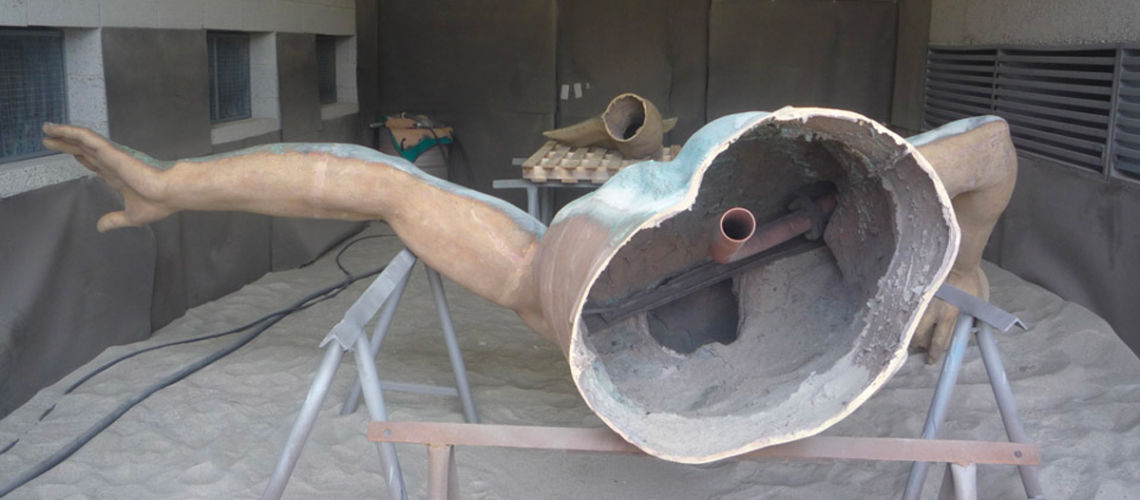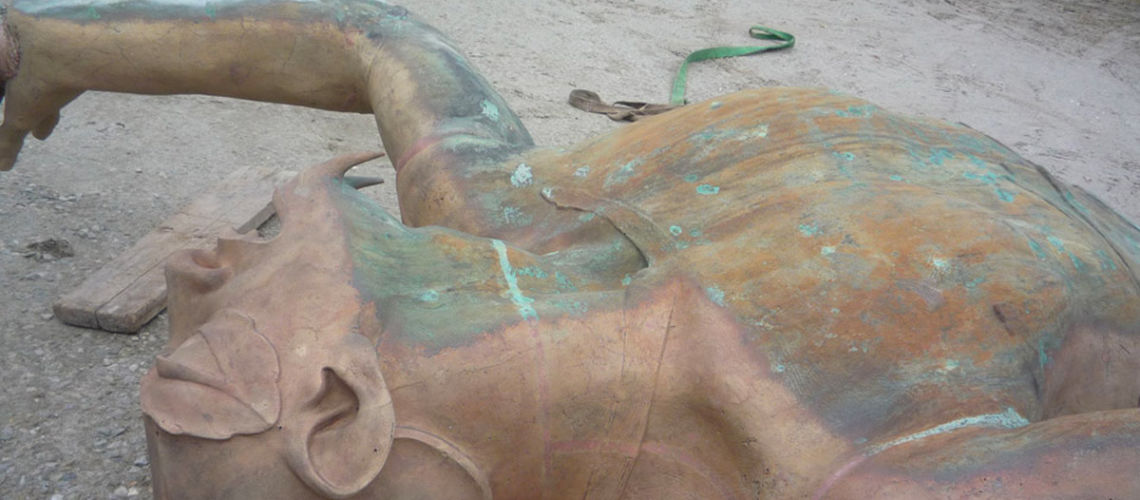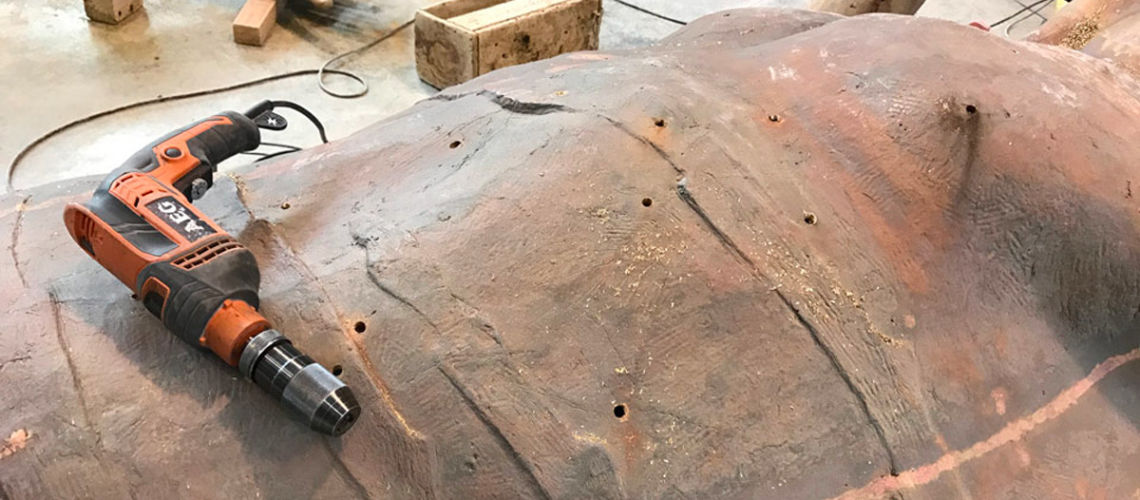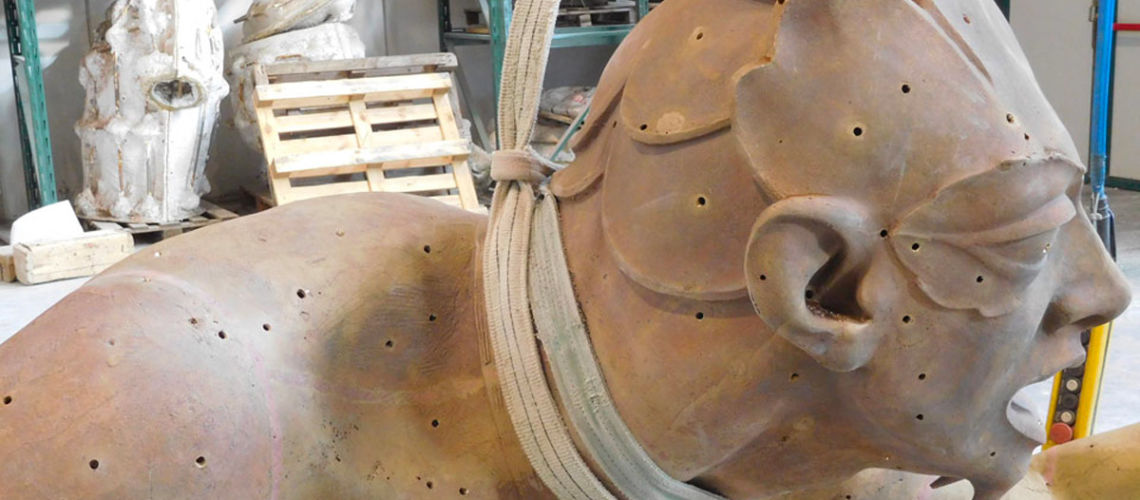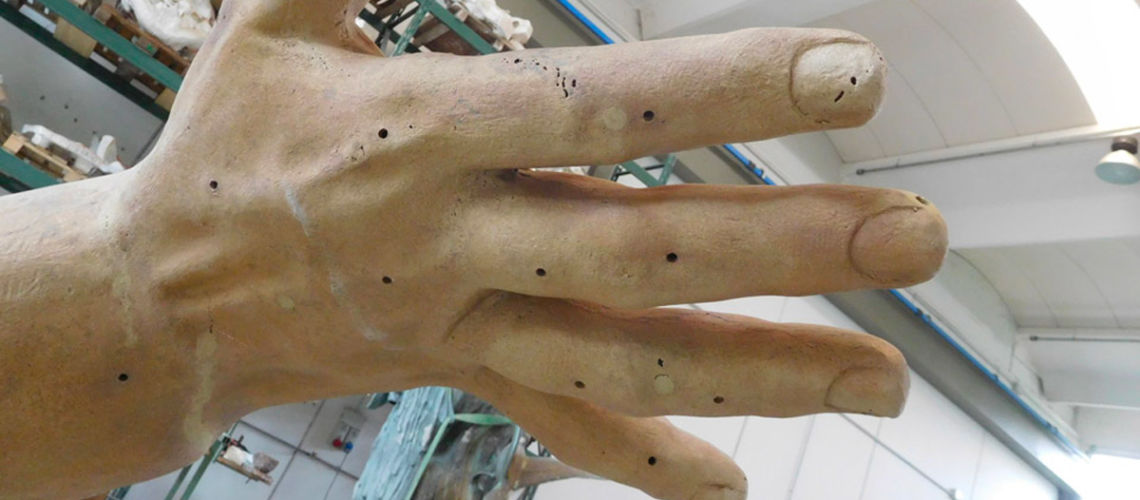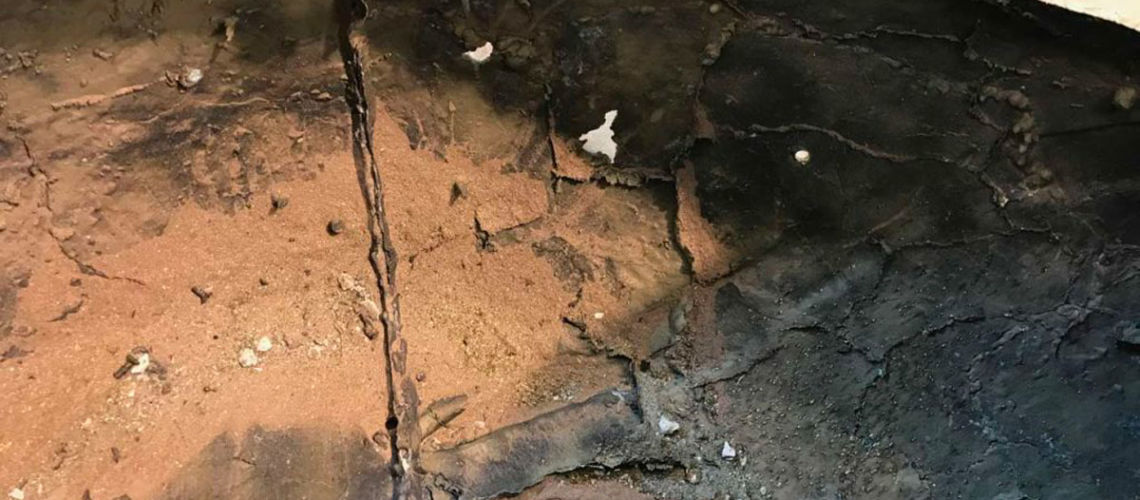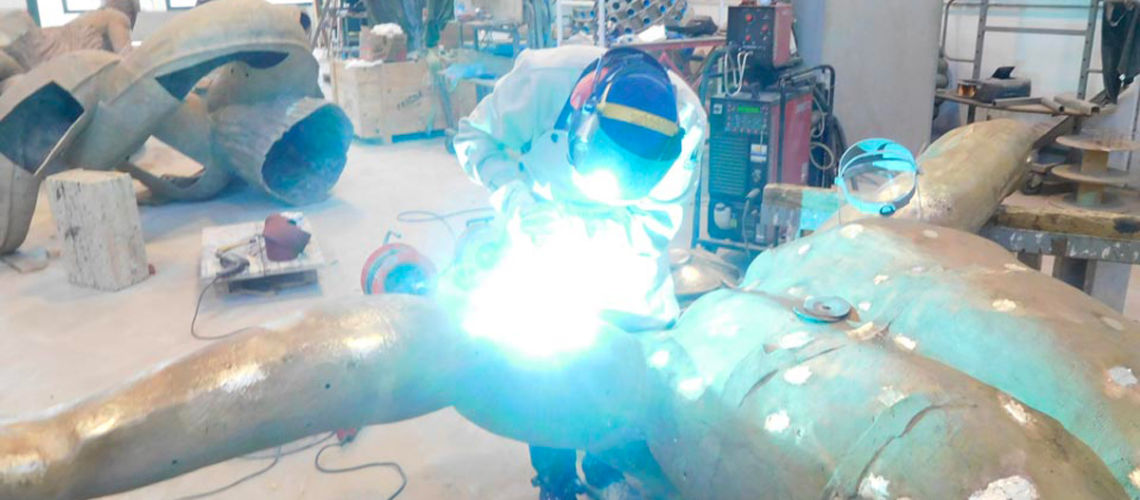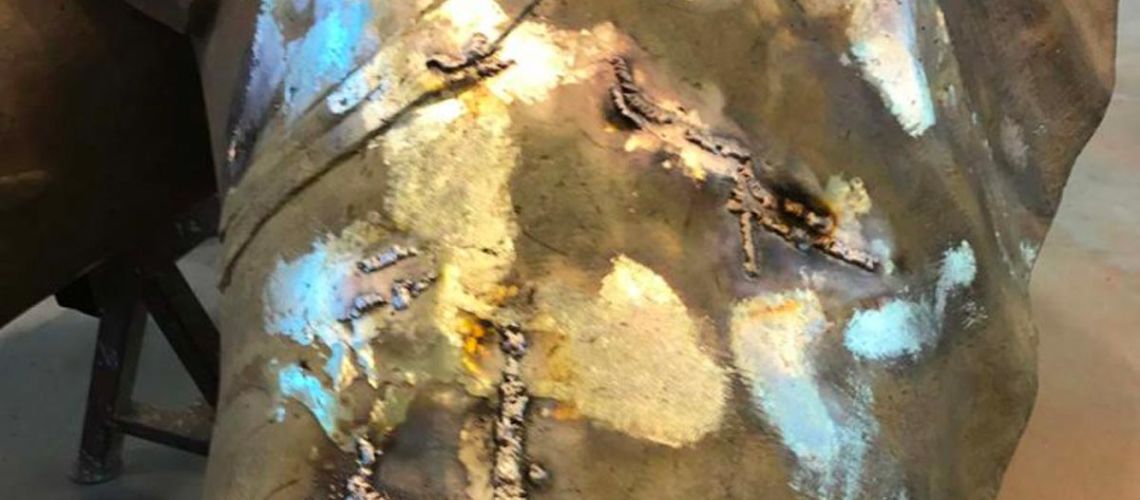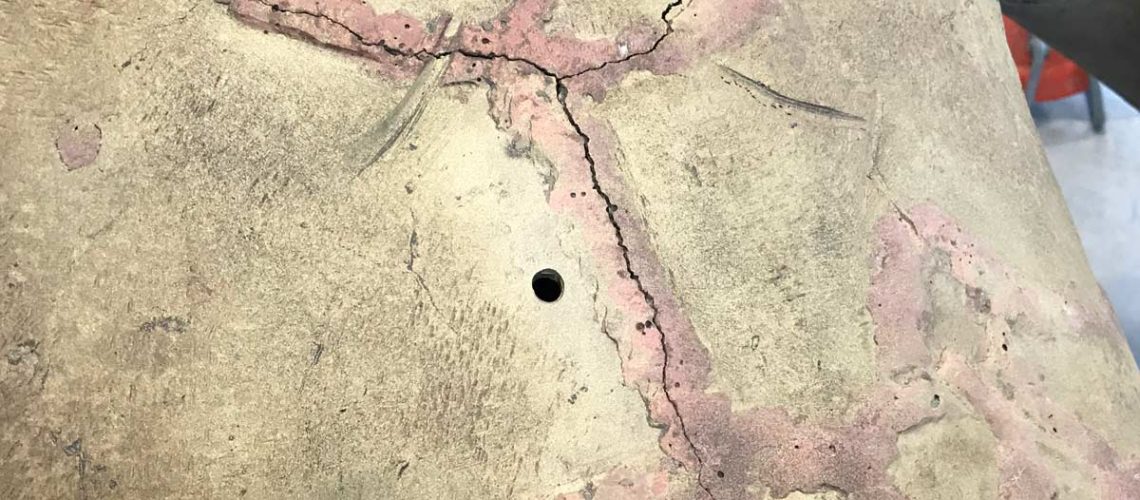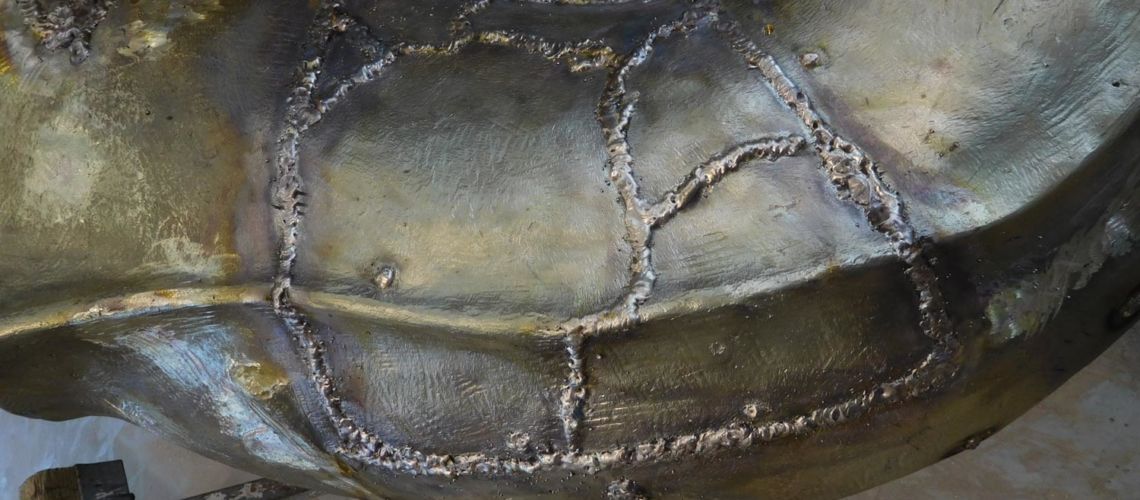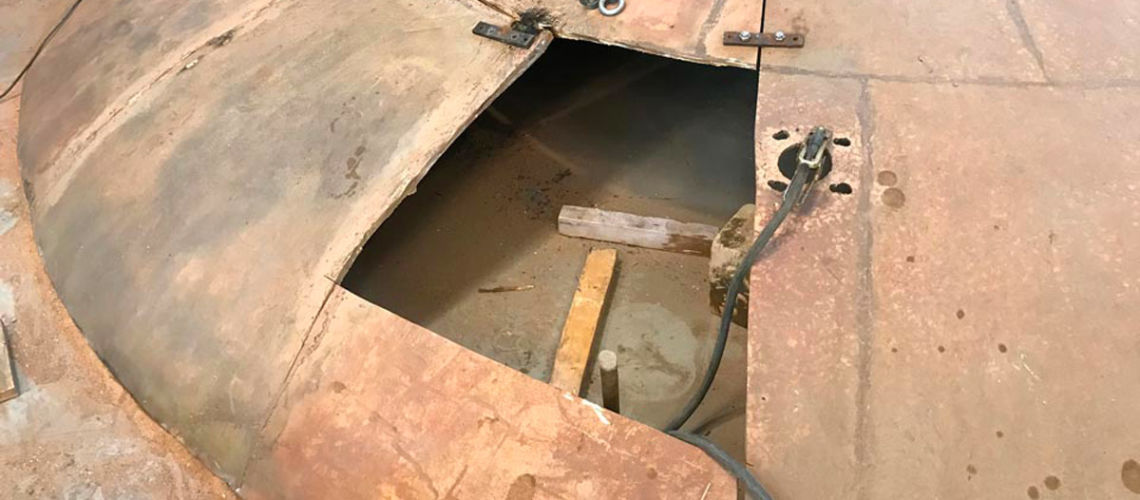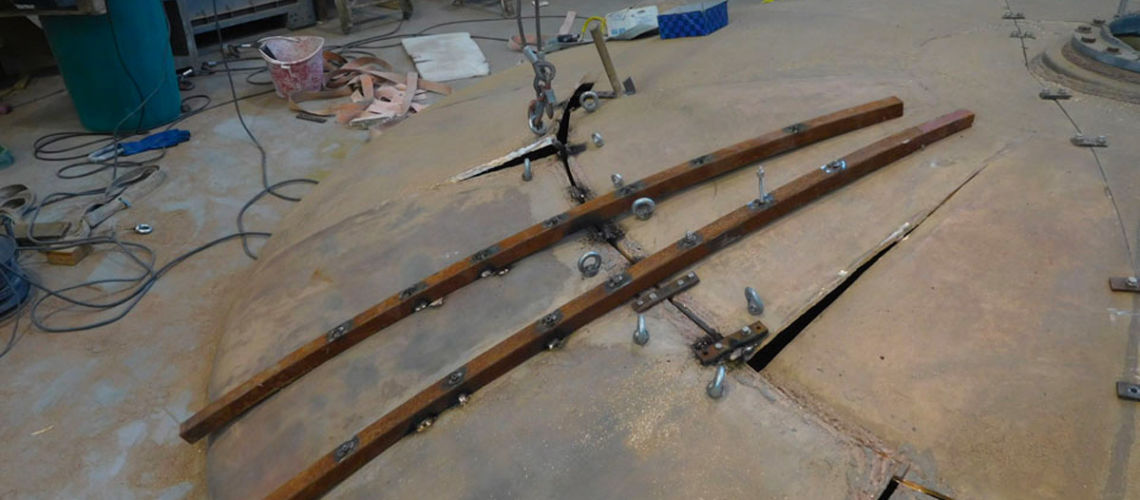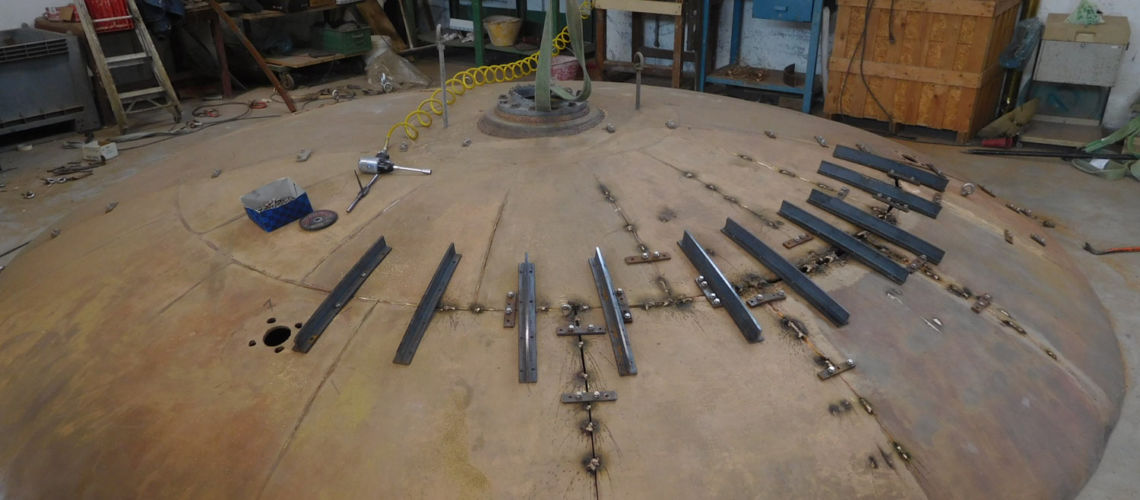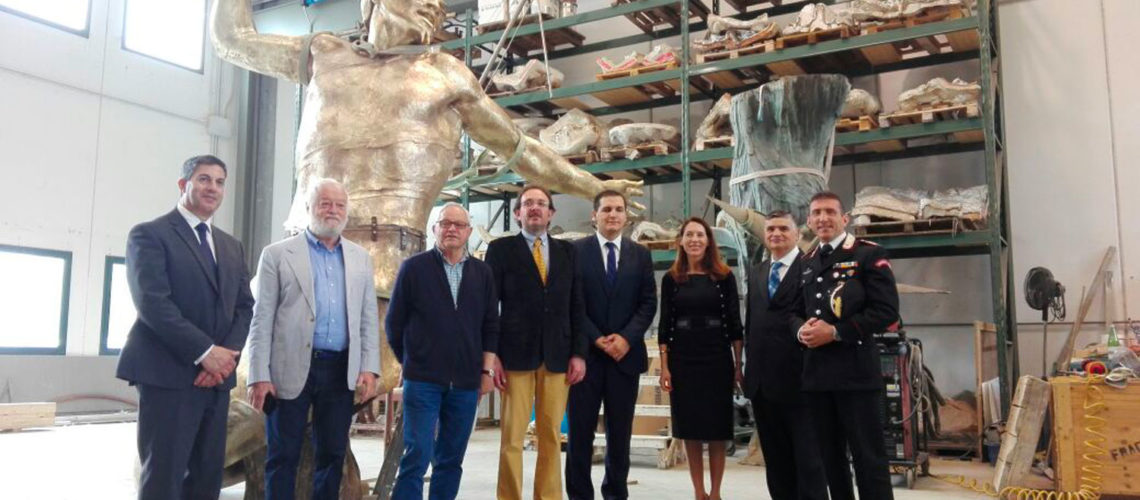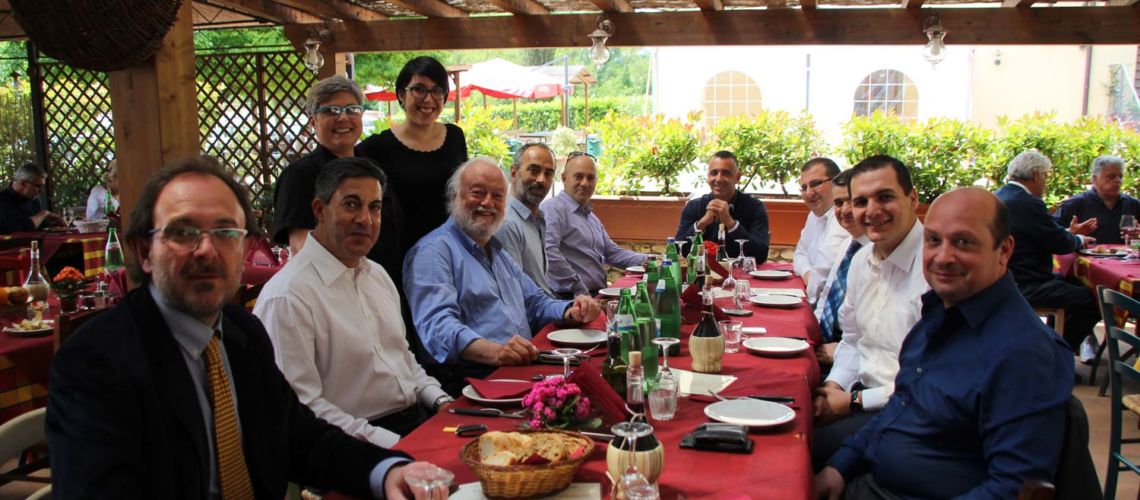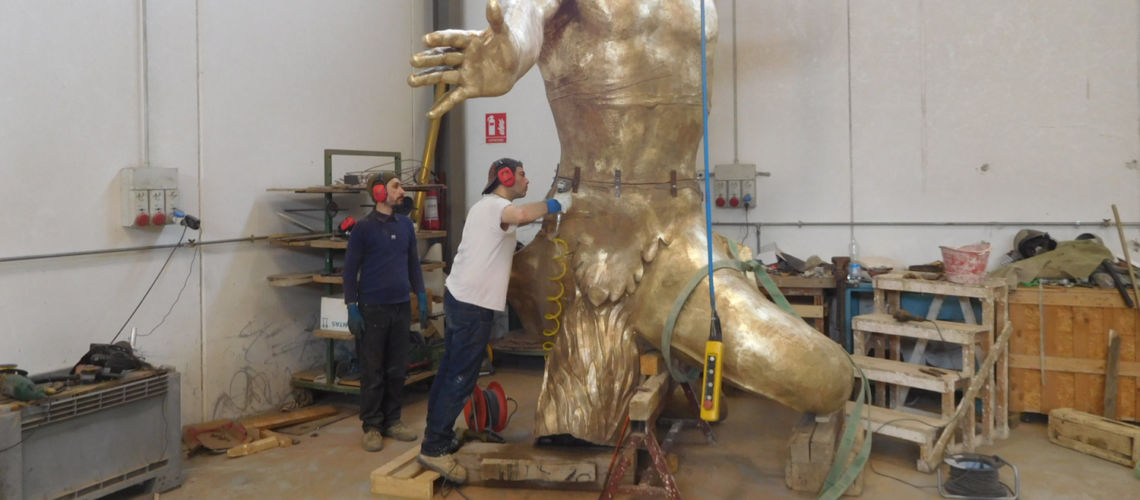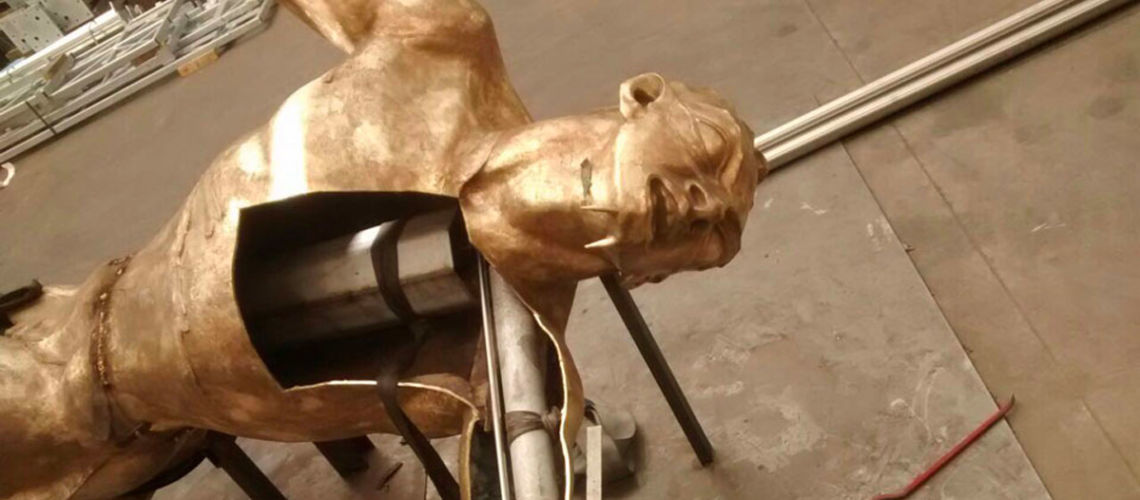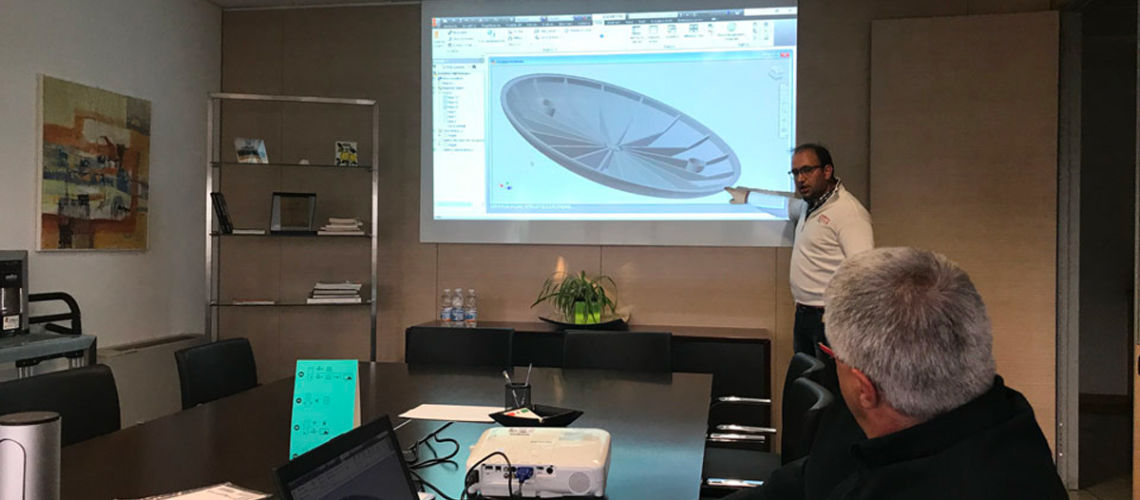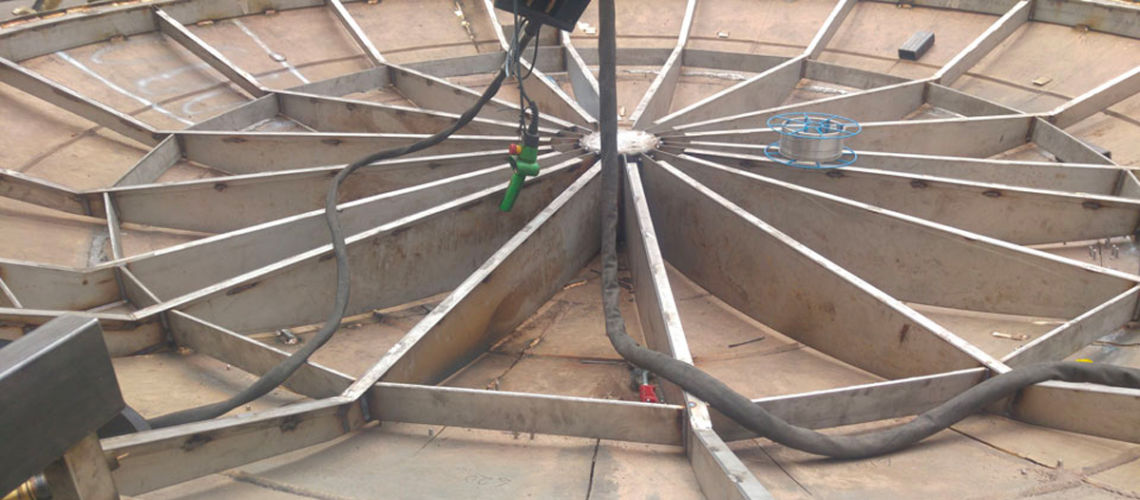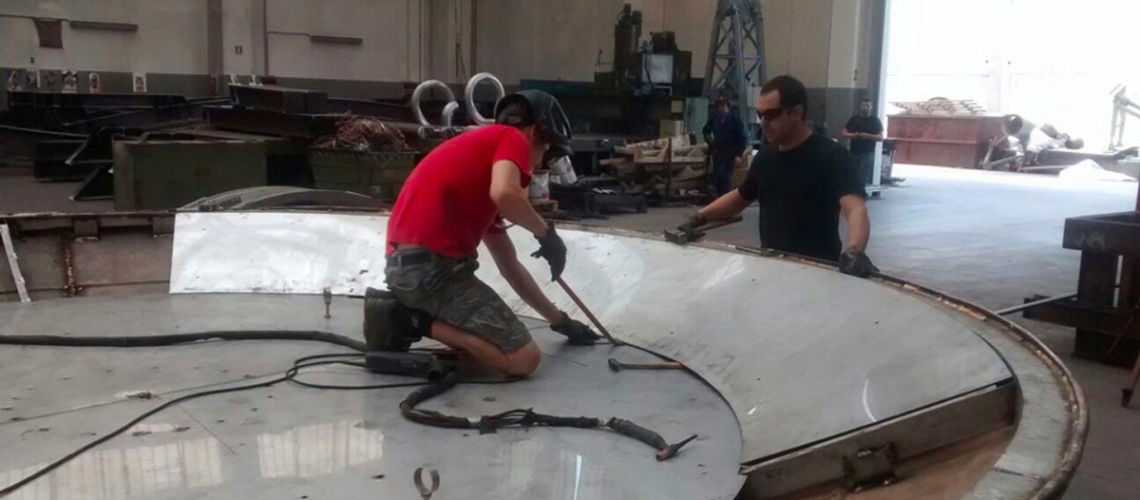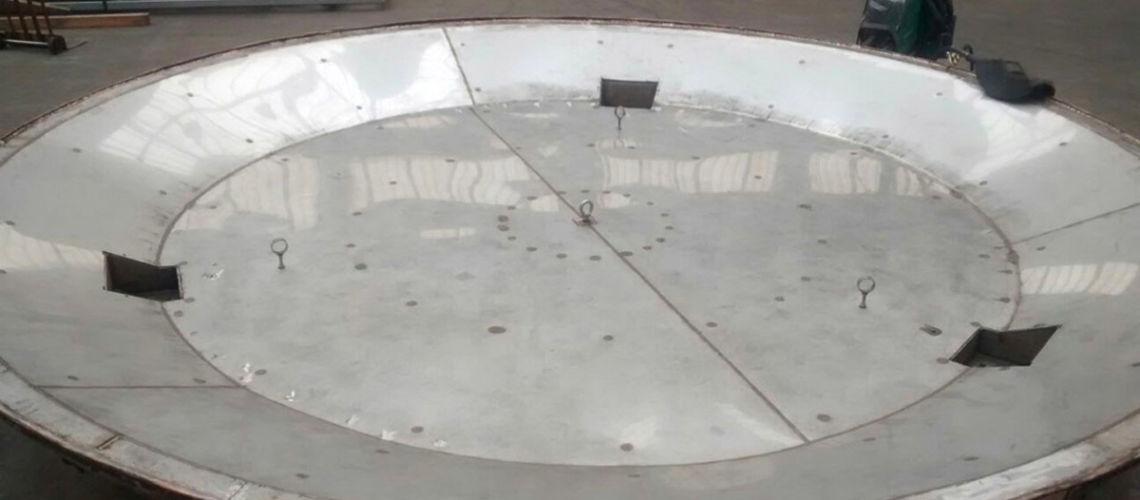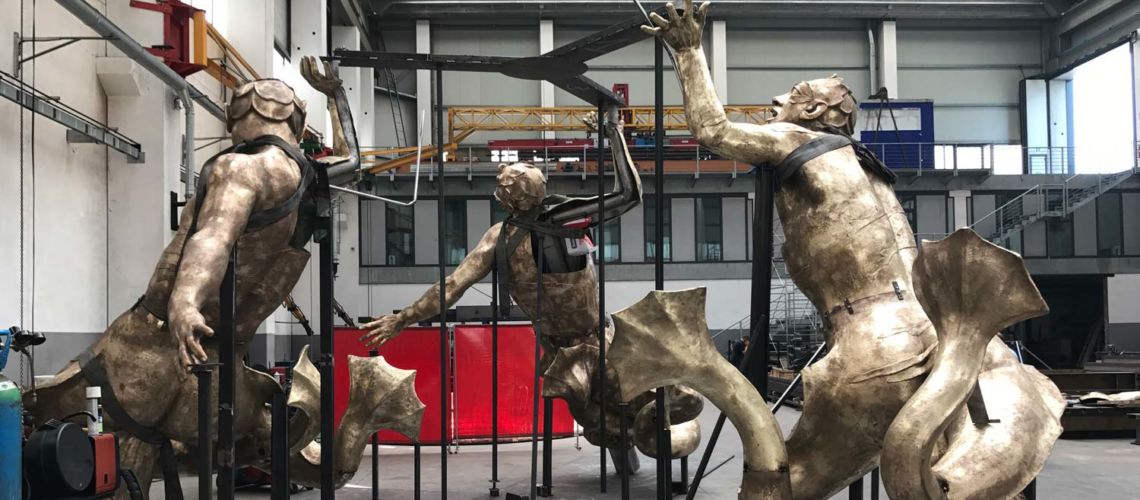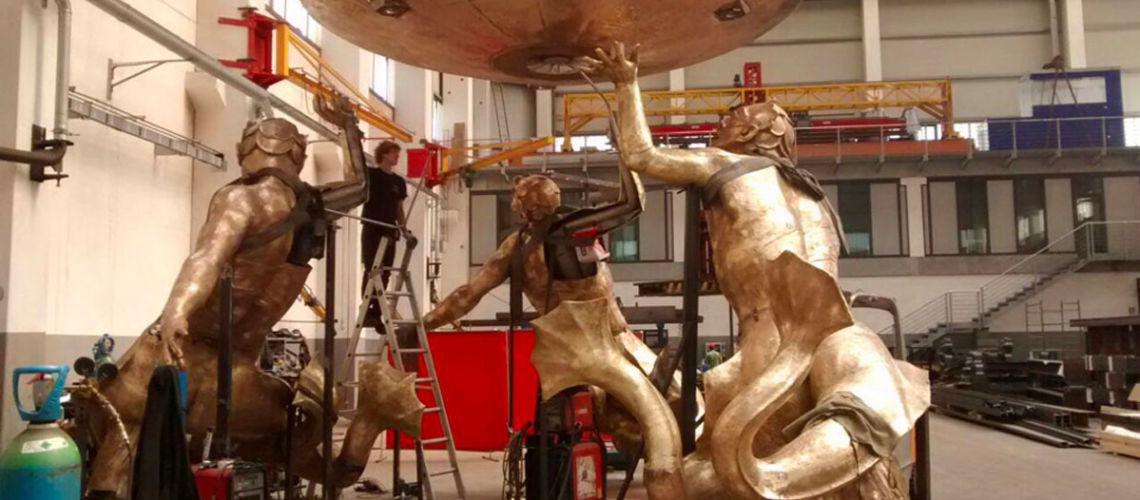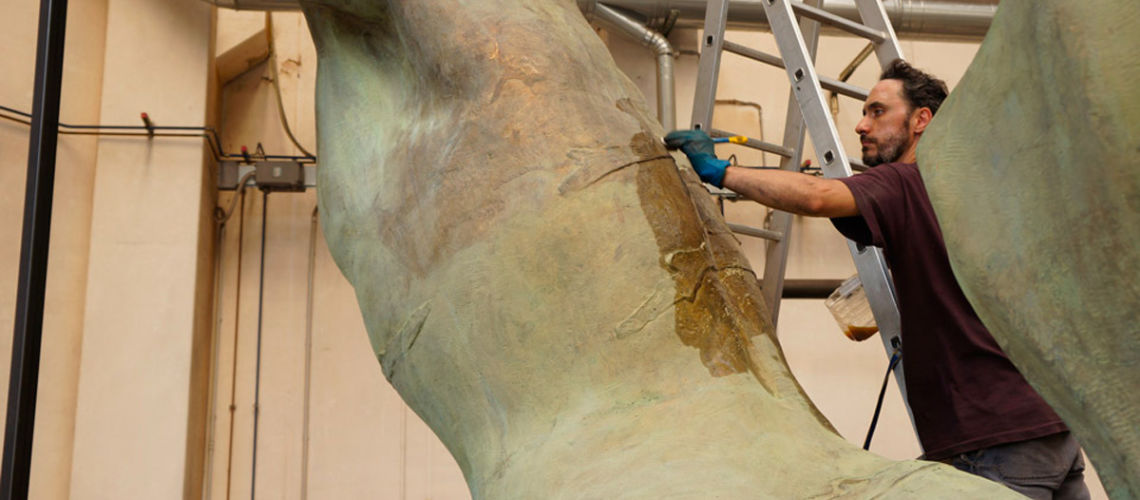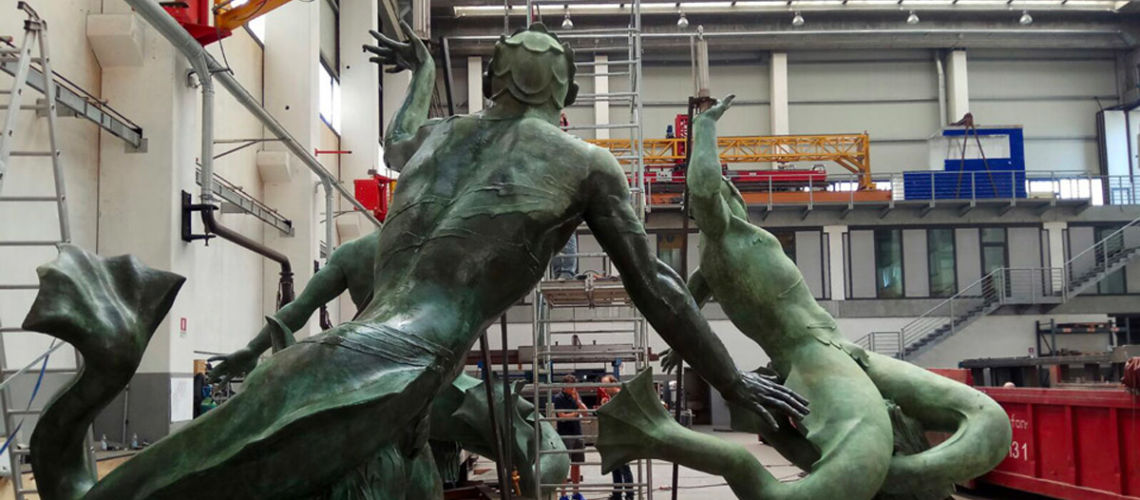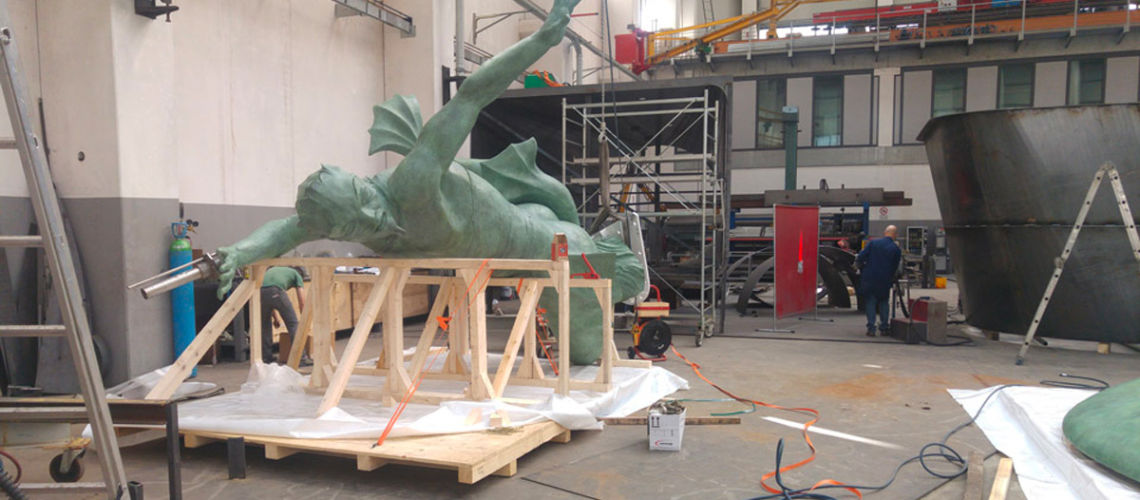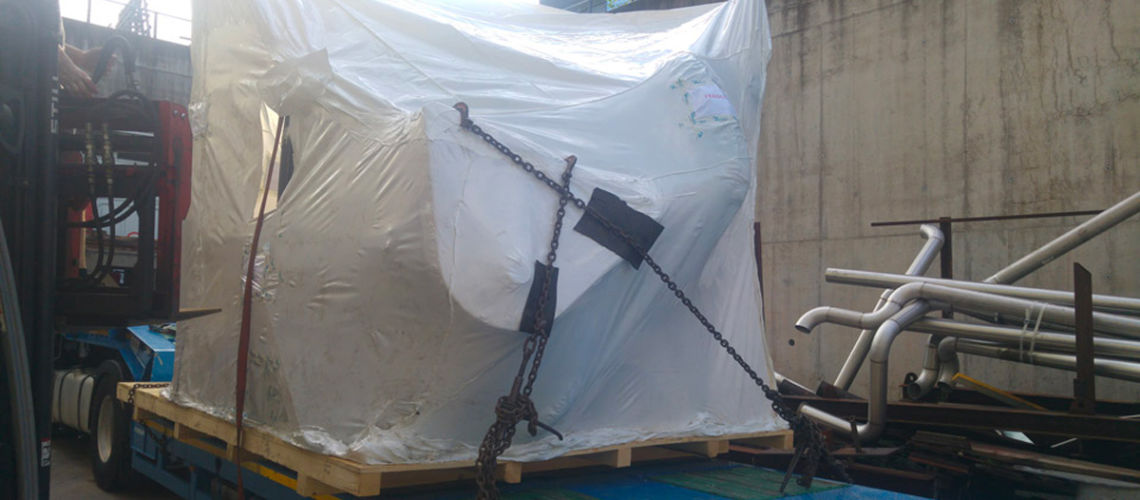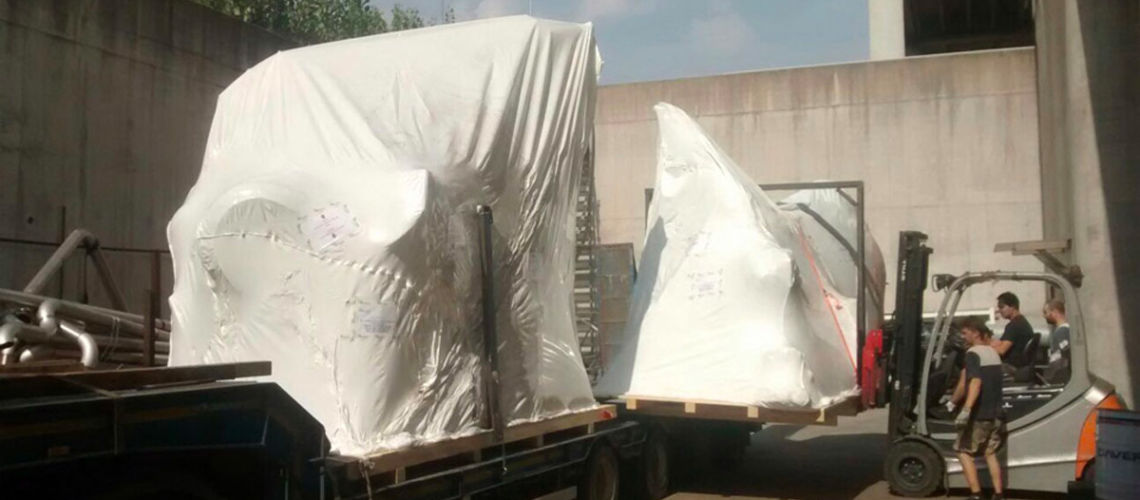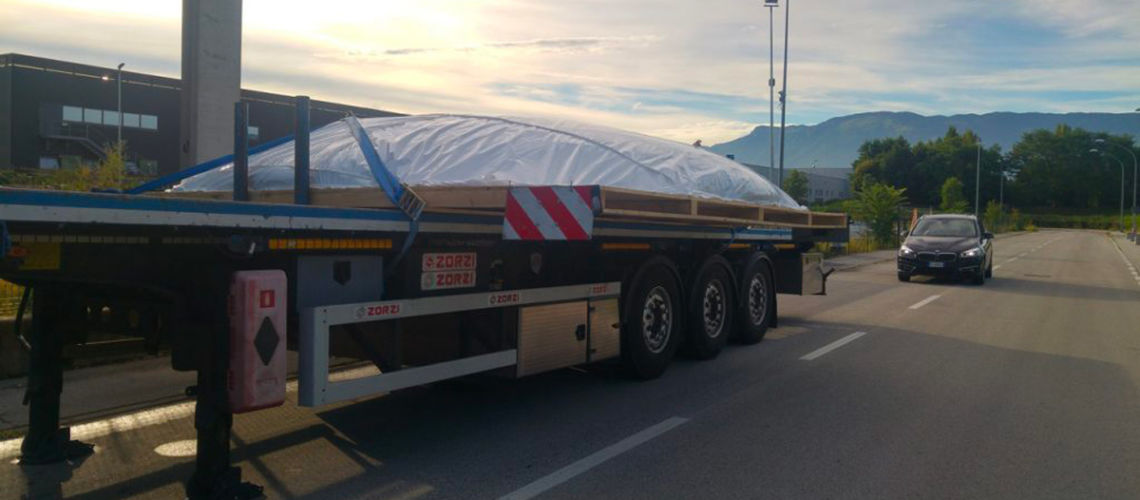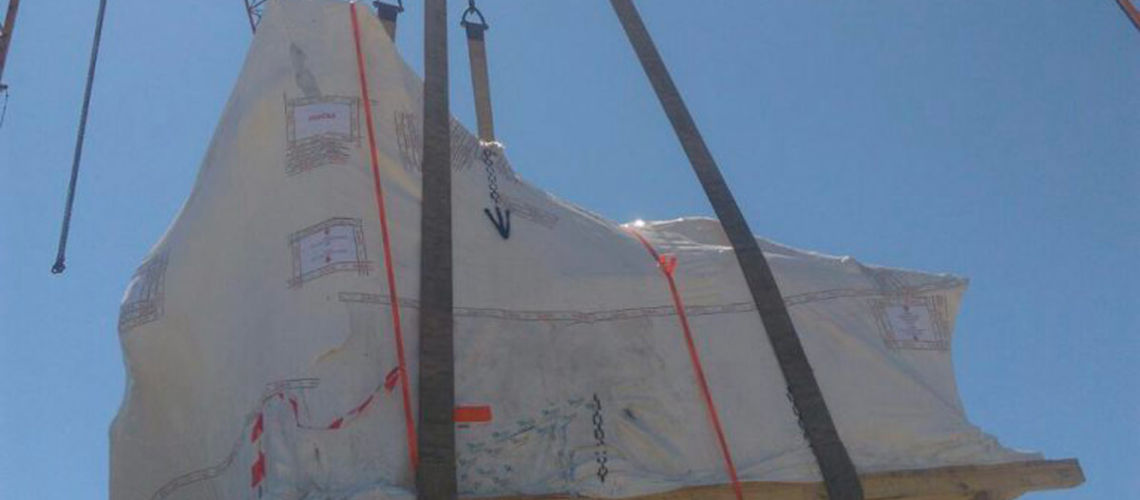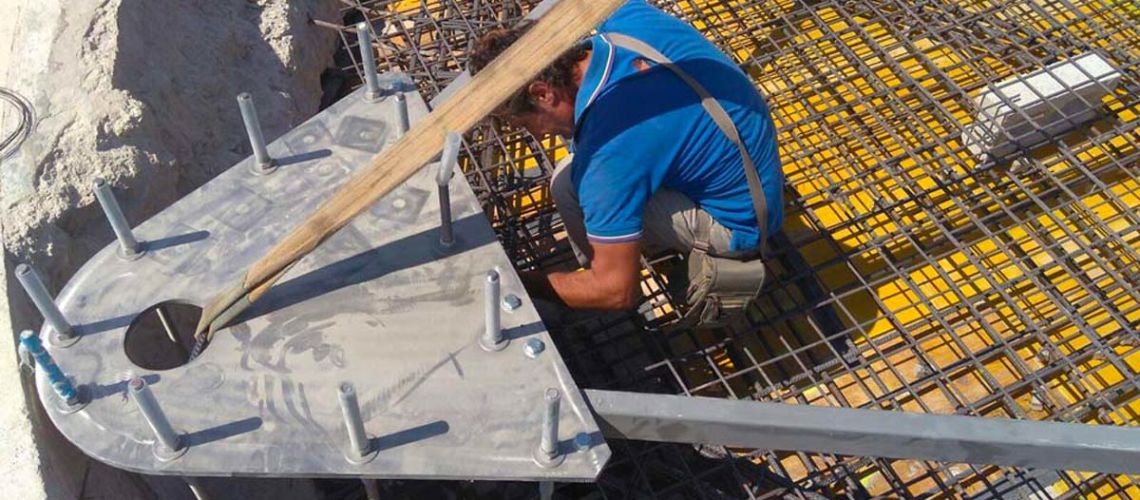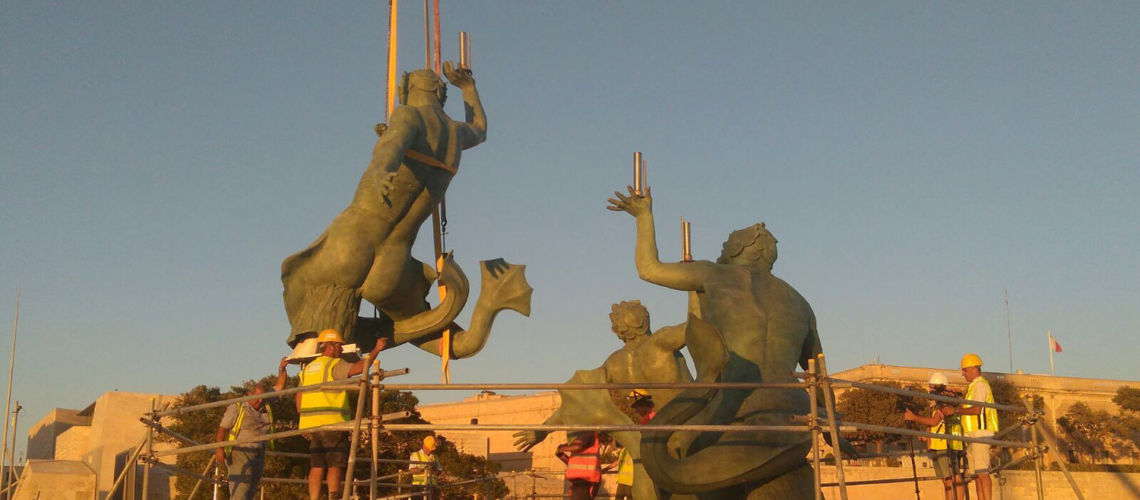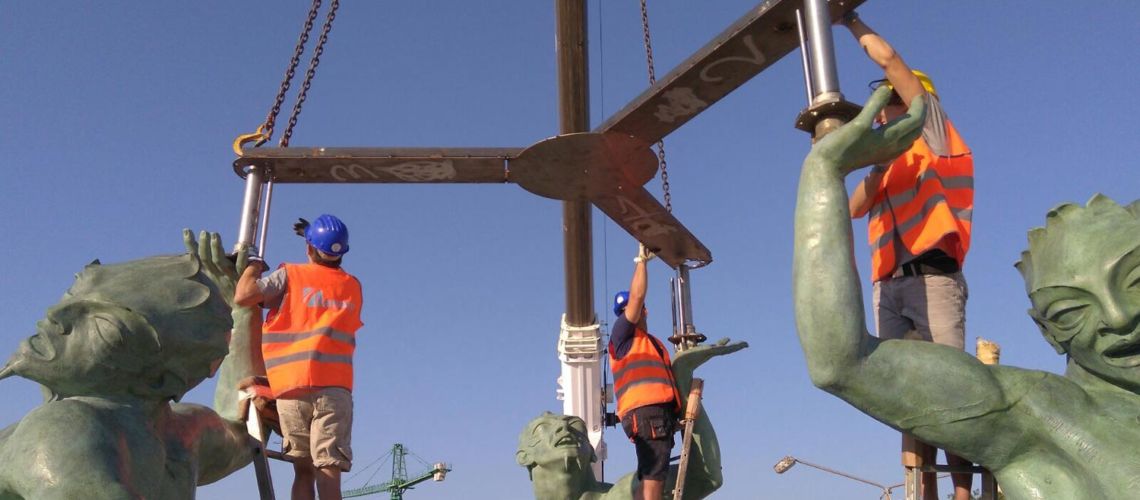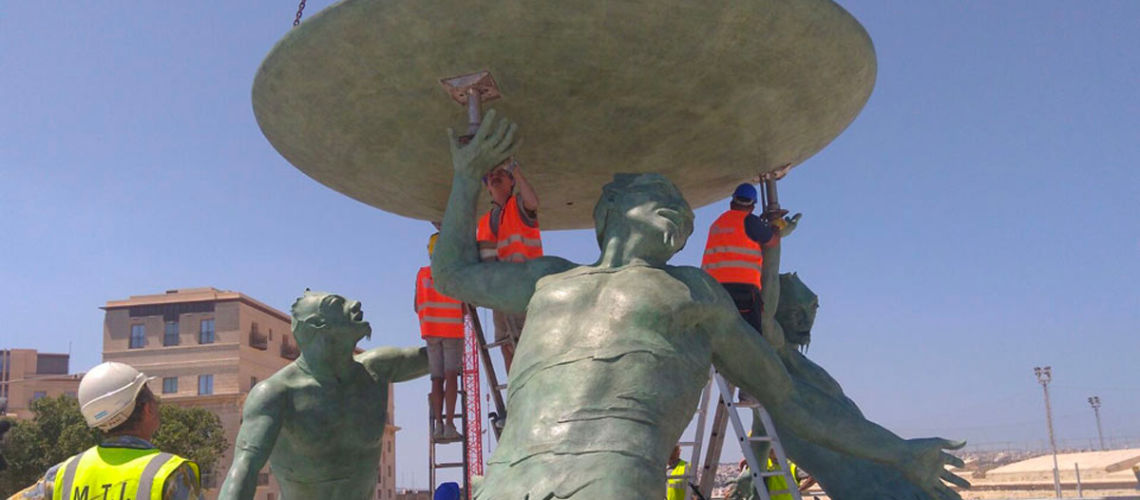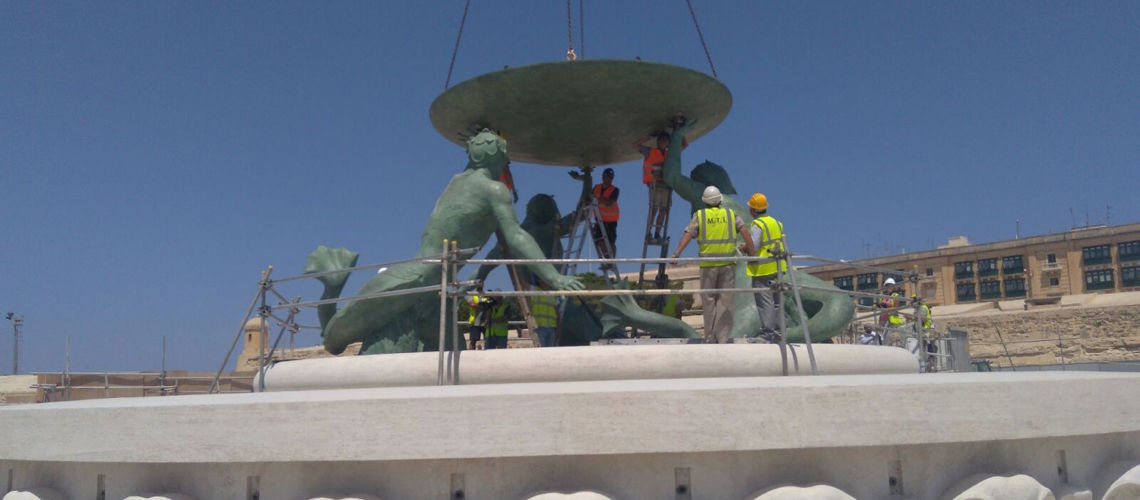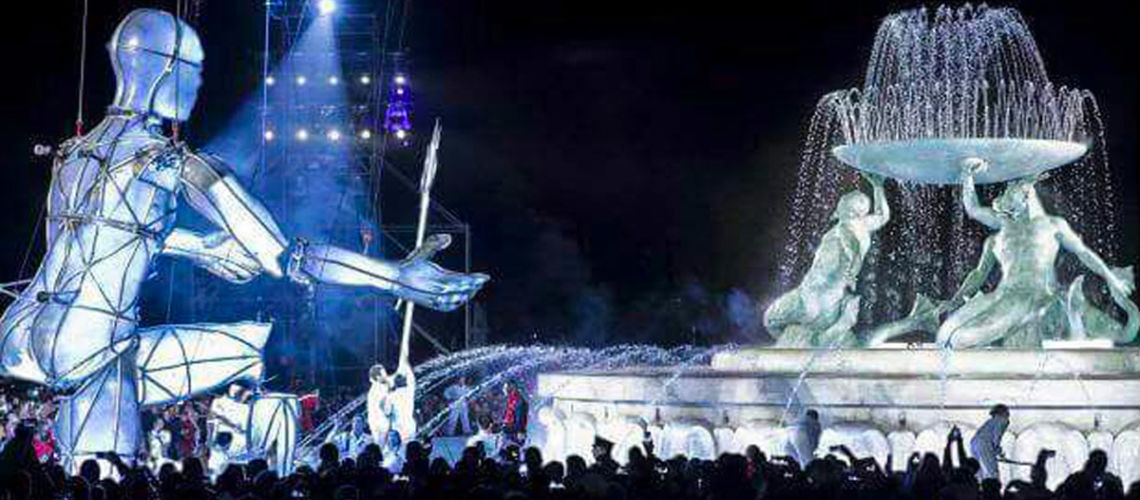Sergio Benvenuti, an artistic friendship and a long American history - The Fountain of Two Oceans in San Diego
When I was a child, I used to play in the Foundry, I often found Sergio Benvenuti, smeared of clay, busy creating some monumental sculpture. I remember him prone to sudden fits of anger when clay failed to obey his commands. Then, a moment later he would be smiling at some joke on the sculptors of the past. Sergio continued to work there also when I was no longer present, being at the university.
When I was forced back to the Foundry at the age of twenty six, after the death of my father, Sergio was the first one to come and see me, give encouragement and offer all his support. Since then we have become friends and we have collaborated together till his death.
When somebody commissioned an important work of art from the Foundry, I immediately asked for Sergio’s support. And Sergio did exactly the same when he received a commission of a bronze sculpture, as happened with the Two Oceans Fountain for San Diego, commissioned by Pat Bowlen.
Pat Bowlen, Chairman of the Bowlen Holding Inc. decided to integrate in the new skyscraper he was building in San Diego with a work of art that would symbolize it and become at the same a “characteristic” landmark of the city. Pat Bowlen spoke about the project to his closer collaborator, Architect Dudy Berretti.
They both immediately thought about Italy and Florence, cradle of art and of that unique historical and artistic period that has been the Renaissance. As a youth Bowlen studied in Florence, Dudy Berretti had been living and working in the US for over thirty years, but he was Florentine by birth.
A short time later Dudi Berretti came to Florence and contacted the Bazzanti Gallery. He visited also the Ferdinando Marinelli’s Artistic Foundry, that he had already heard about in the US, and at the Foundry he met Benvenuti. I told him about our friendship and about his exceptional ability as creator of models, as well as a sculptor with golden hands.
I organized some dinners, and during one of them, after Dudi had spoken by telephone with Pat Bowlen, the new idea for the San Diego skyscraper monument was born: a fountain with two frontal characters, male and female, virtually leaning on their generator element, a surface of water: the Fountain of the Two Oceans. After a few days, in the Bazzanti Gallery, the first sketches of Benvenuti that Dudi brought with him to the States were ready. Pat Bowlen and all the staff were enthusiastic. Benvenuti passed to the clay sketch, then in plaster, also approved by the client.
The last details were studied and Benvenuti began the enlargement of the first of the two characters in the special foundry rooms. Within a few months the Pacific Ocean had ended in clay, in the wanted size.
After the definitive approval of Bowlen Holding Inc., the Foundry began its patient work: the negative mould of the clay sculpture was executed with particular care, from which the waxes were obtained, of which Benvenuti himself followed the retouching performed by the Foundry craftsmen. It then passed to the bronze casting with the ancient technique of lost wax, to the finishing, to the assembly and to the patina.
Without putting time in the middle, Benvenuti started the enlargement of the second sculpture, the Atlantic Ocean. In eight months the work of Benvenuti and the Foundry transformed the idea born during a dinner in an important bronze monument. Packed in two large wooden crates, the sculptures left the Foundry by lorry to the port of Livorno, where they left for San Diego, and then transported to a specially raised tent in the square at the foot of the new skyscraper. Shortly after, Me, Benvenuti, the Ferdinando Marinelli Foundry and the Bazzanti Gallery technicians reached San Diego for the assembly and inauguration of the monument.
To this day the Fountain of the Two Oceans is an important urban landmark in the city, much admired and loved by the citizens of San Diego, so much so that it dedicated some illustrated postcards.

